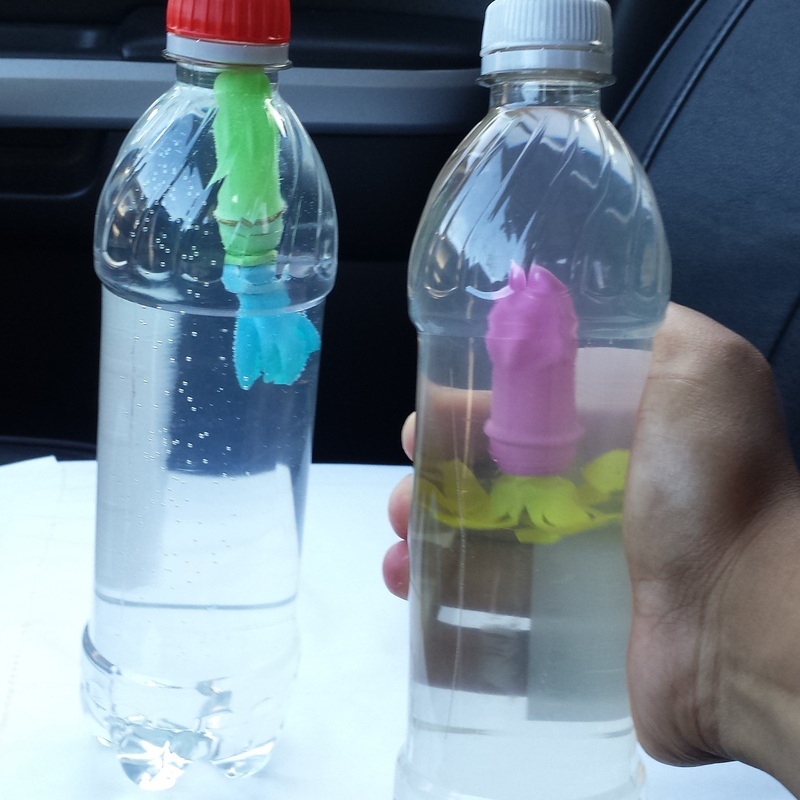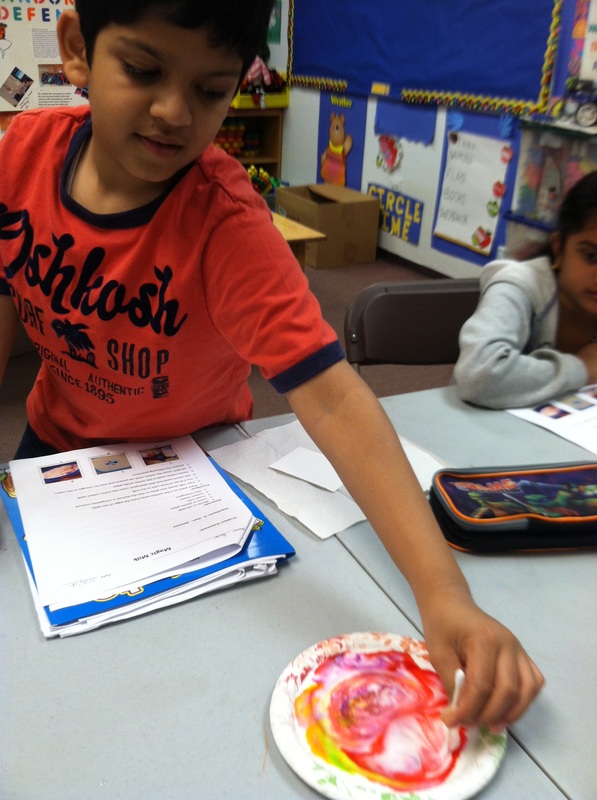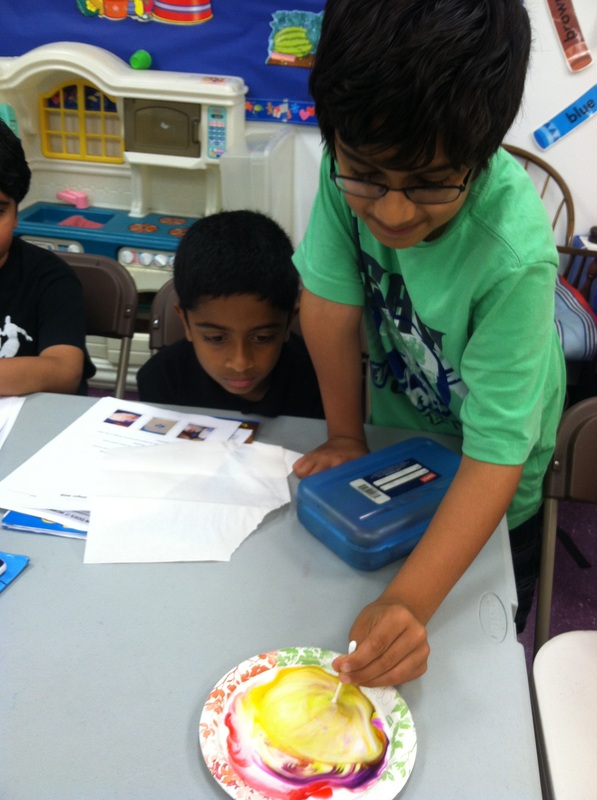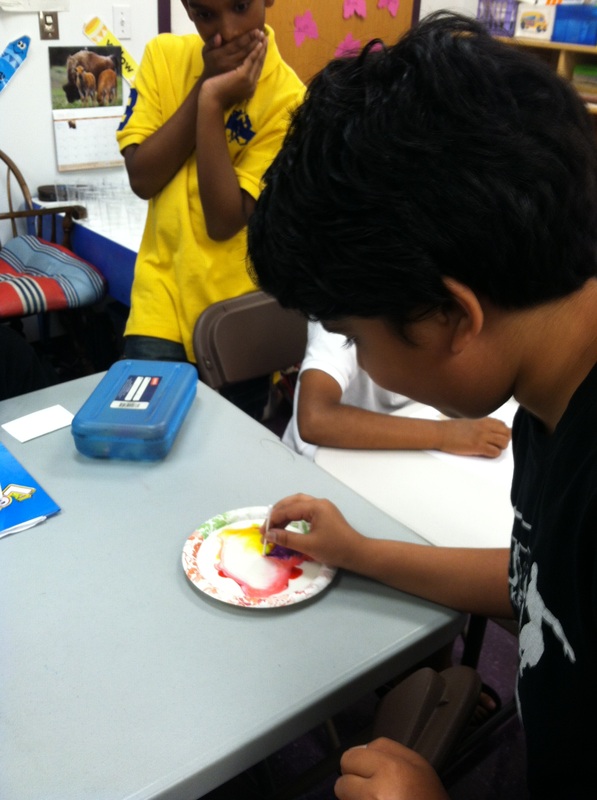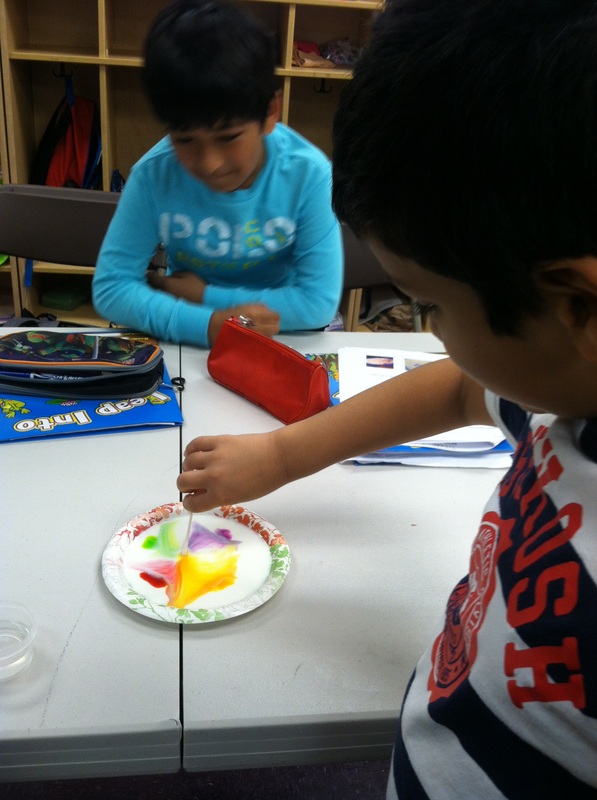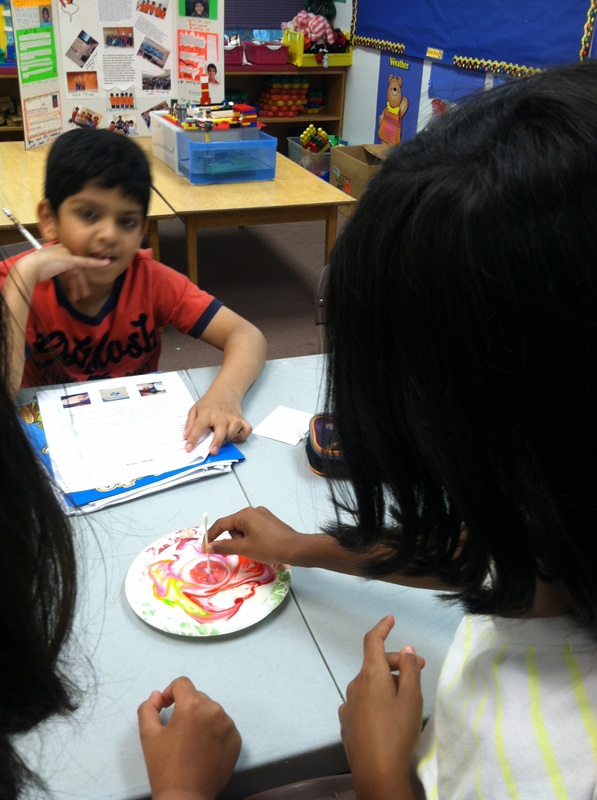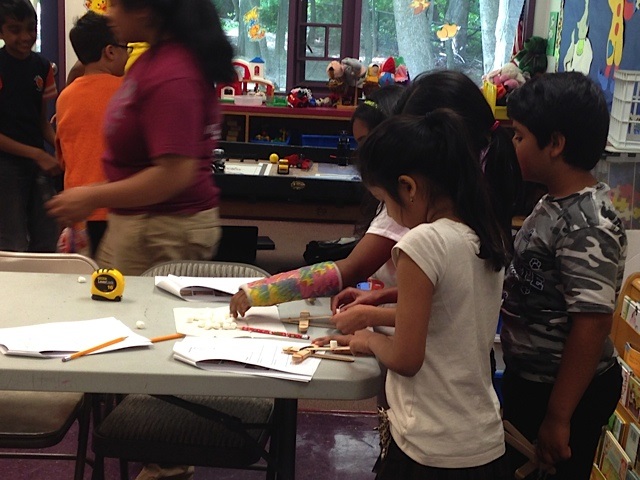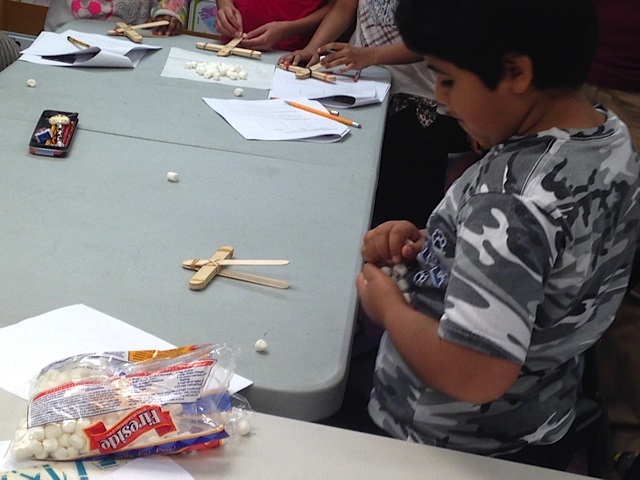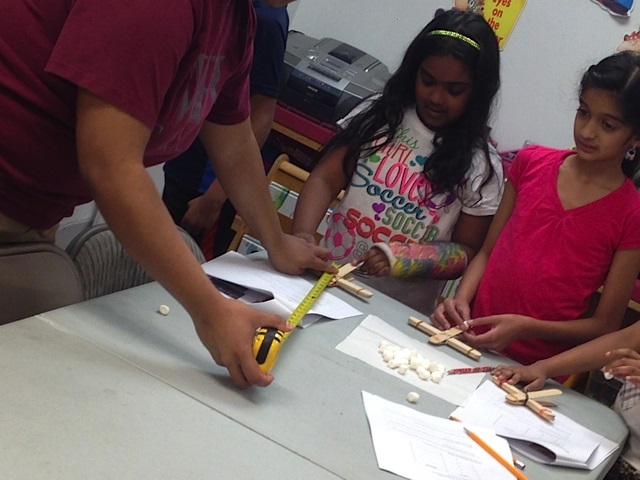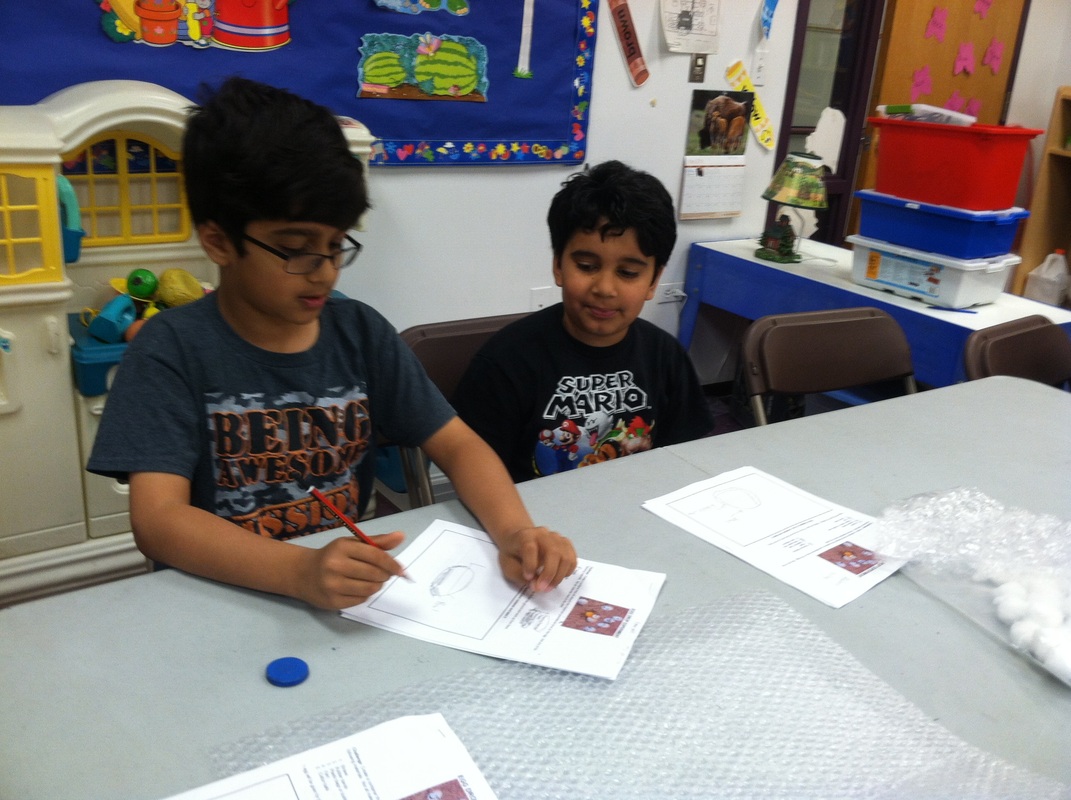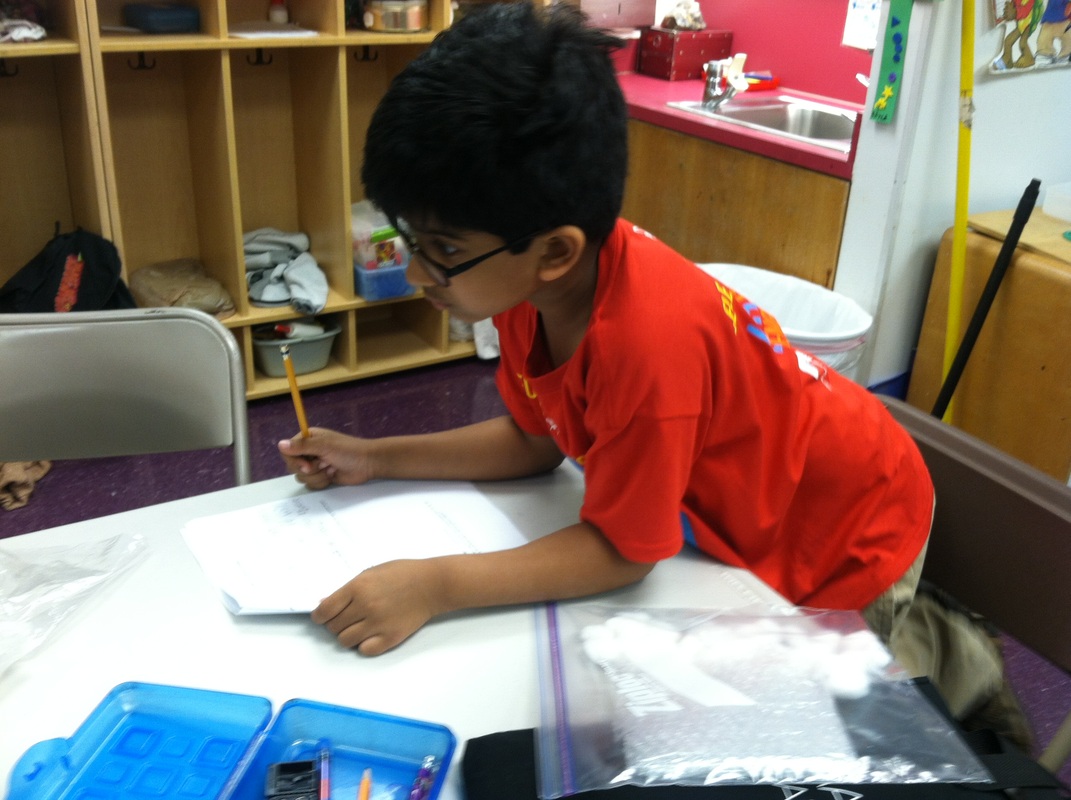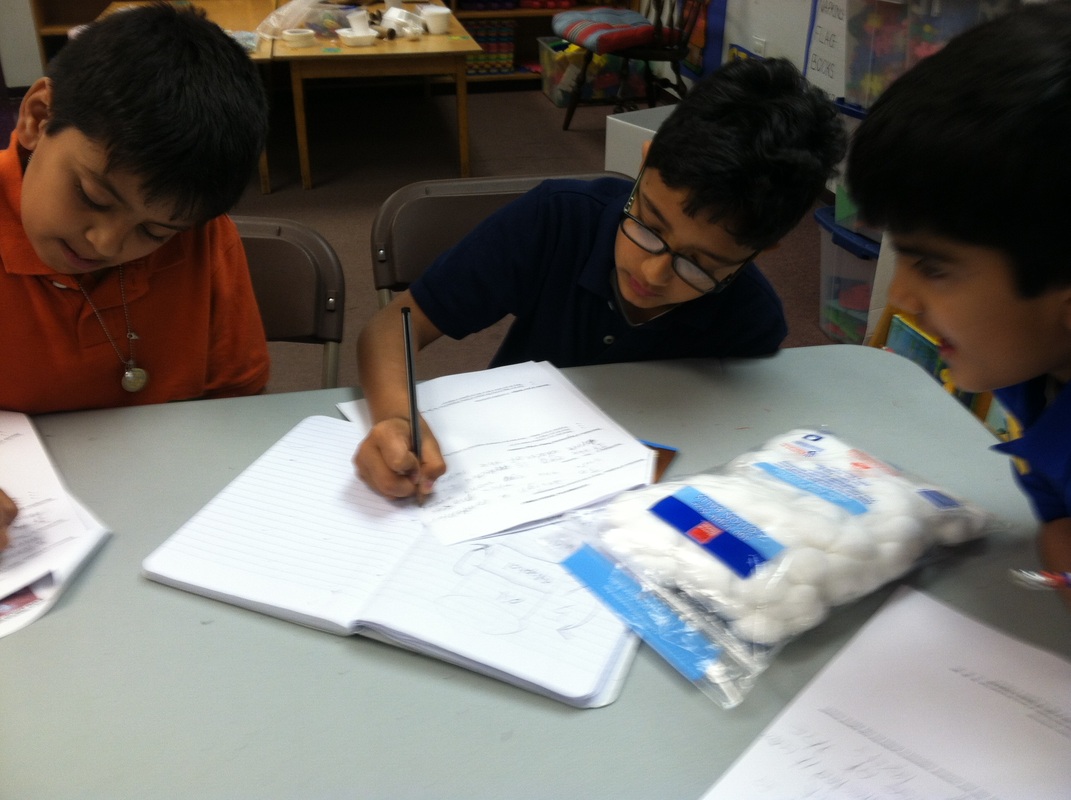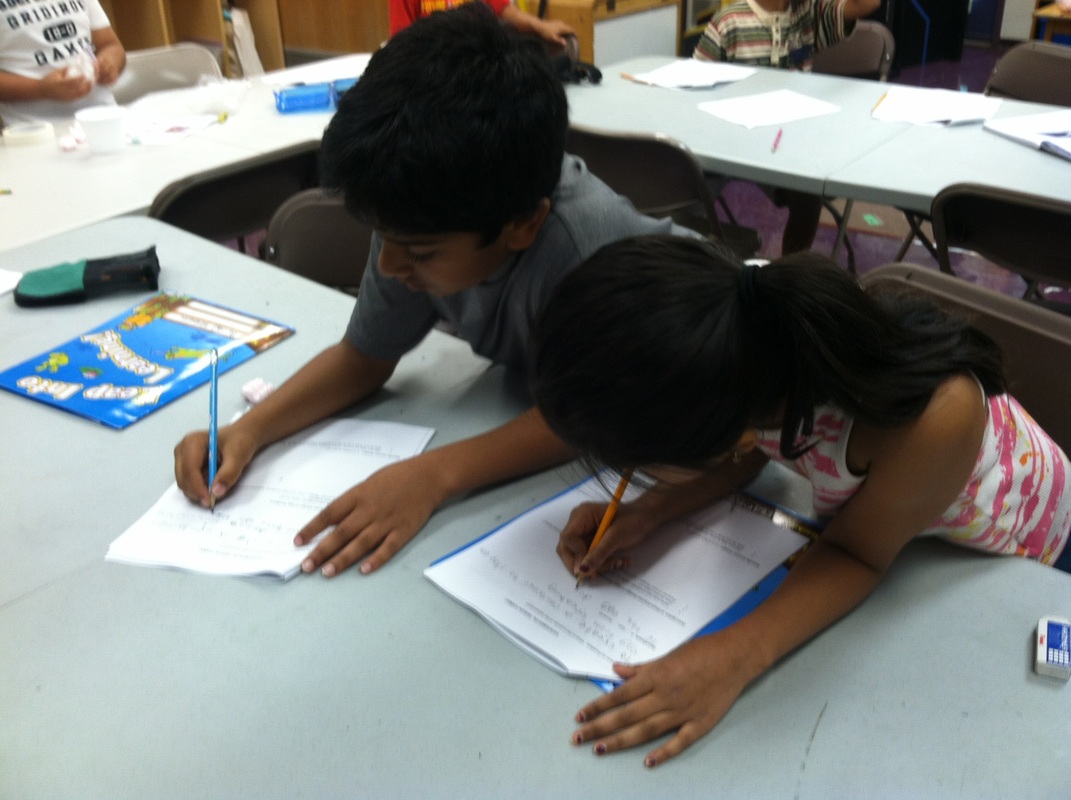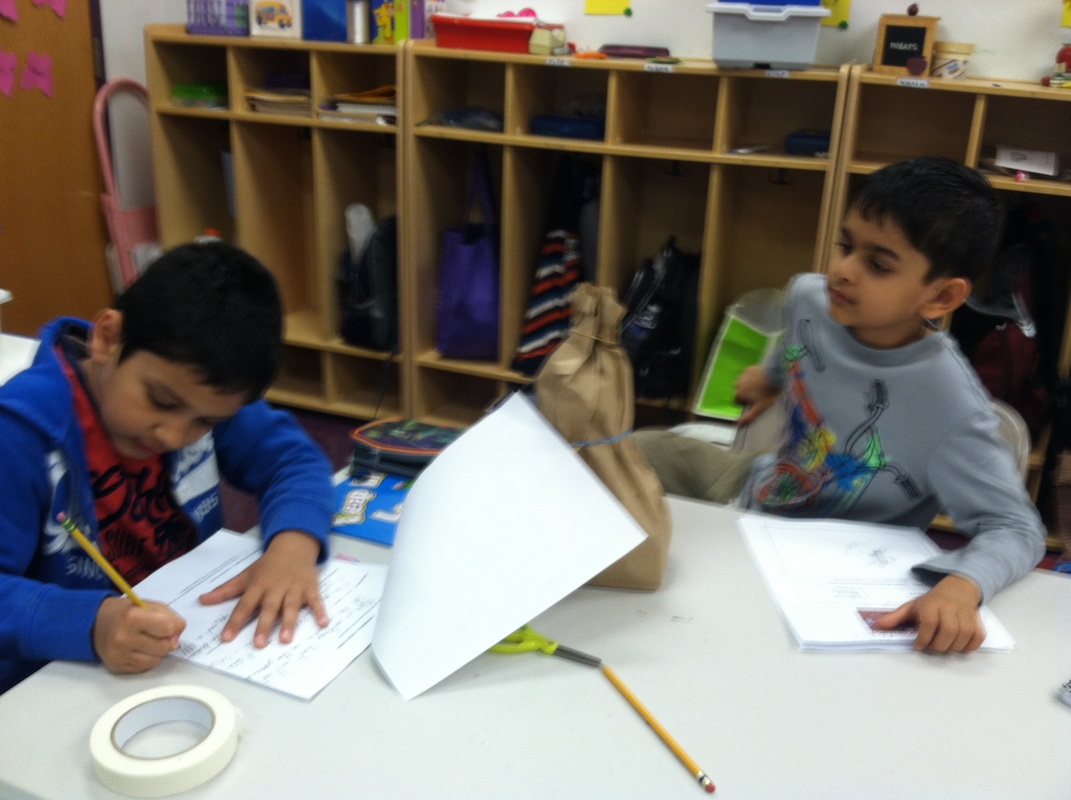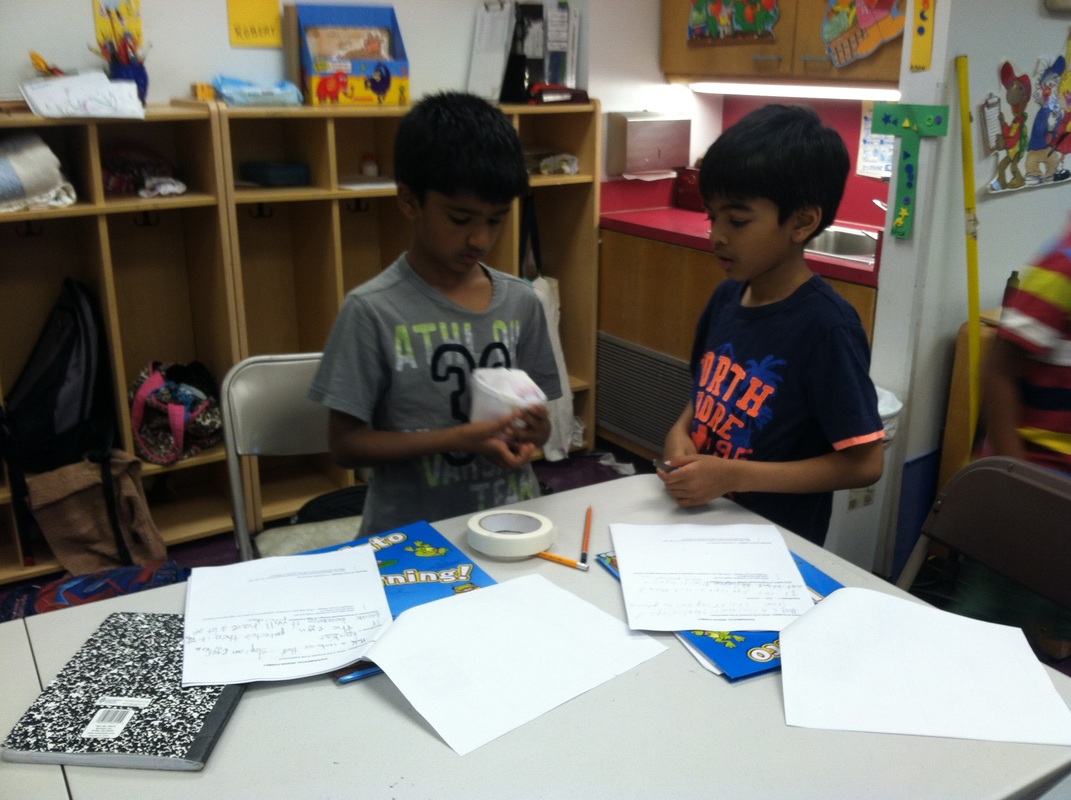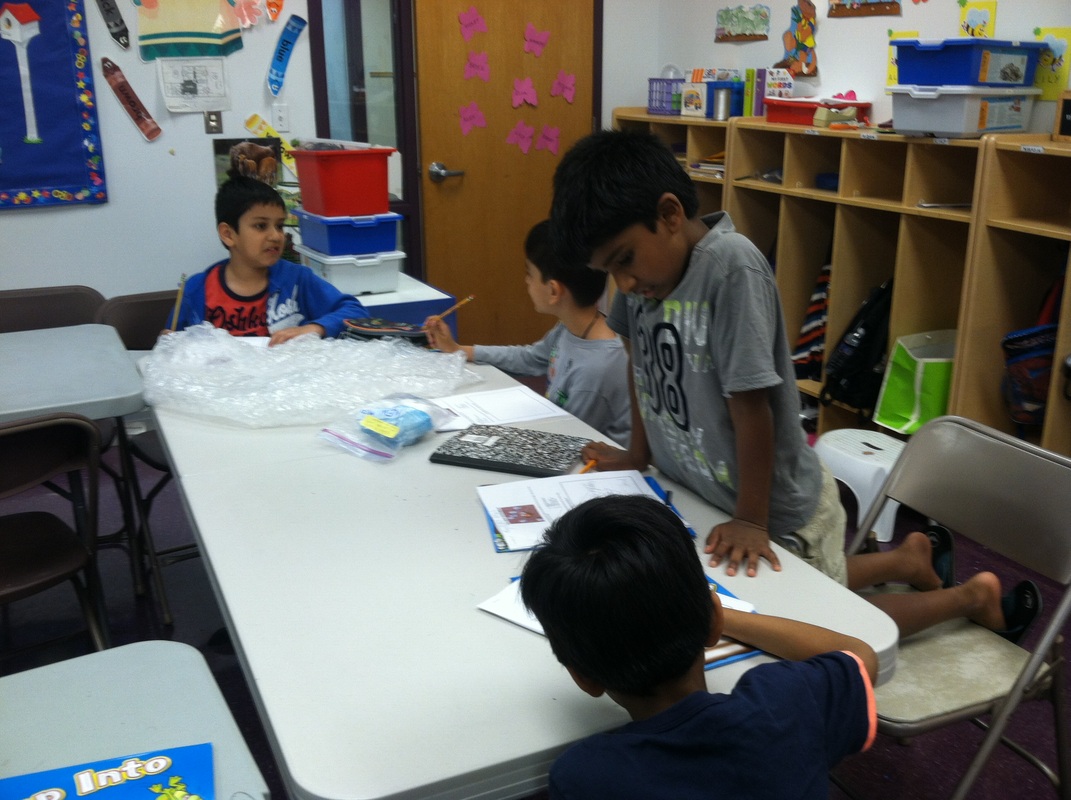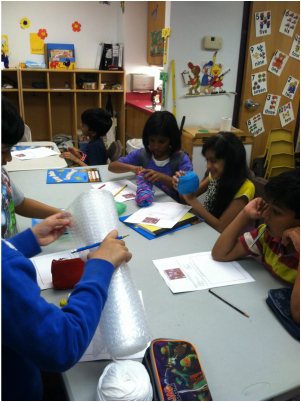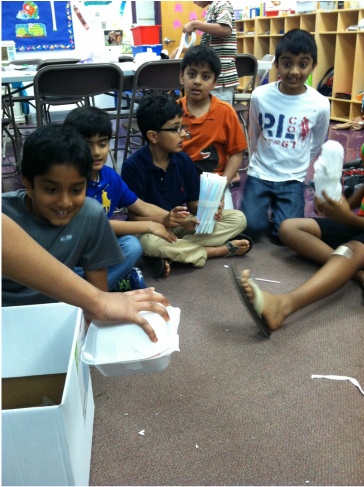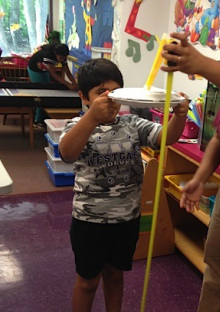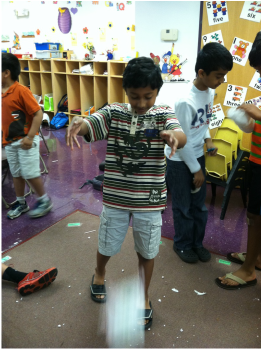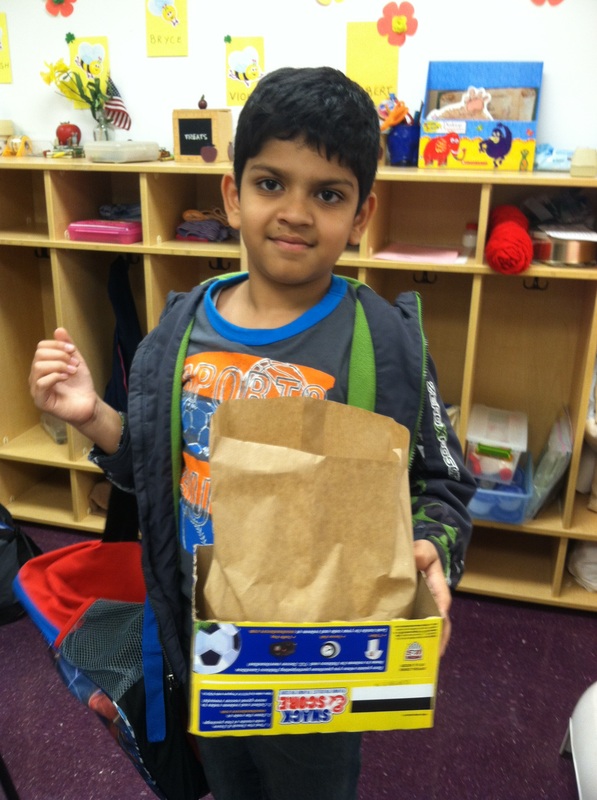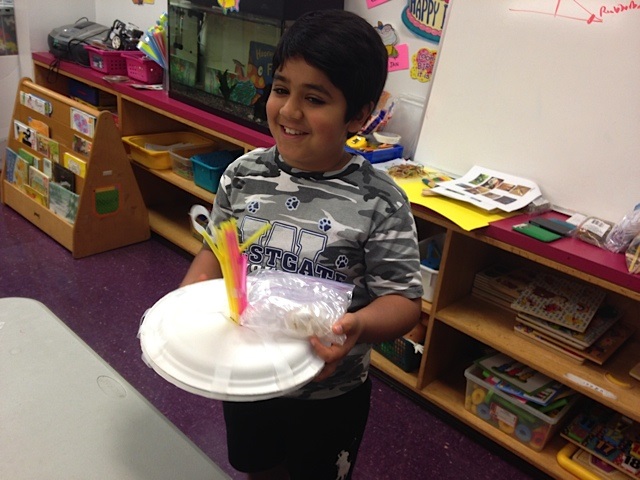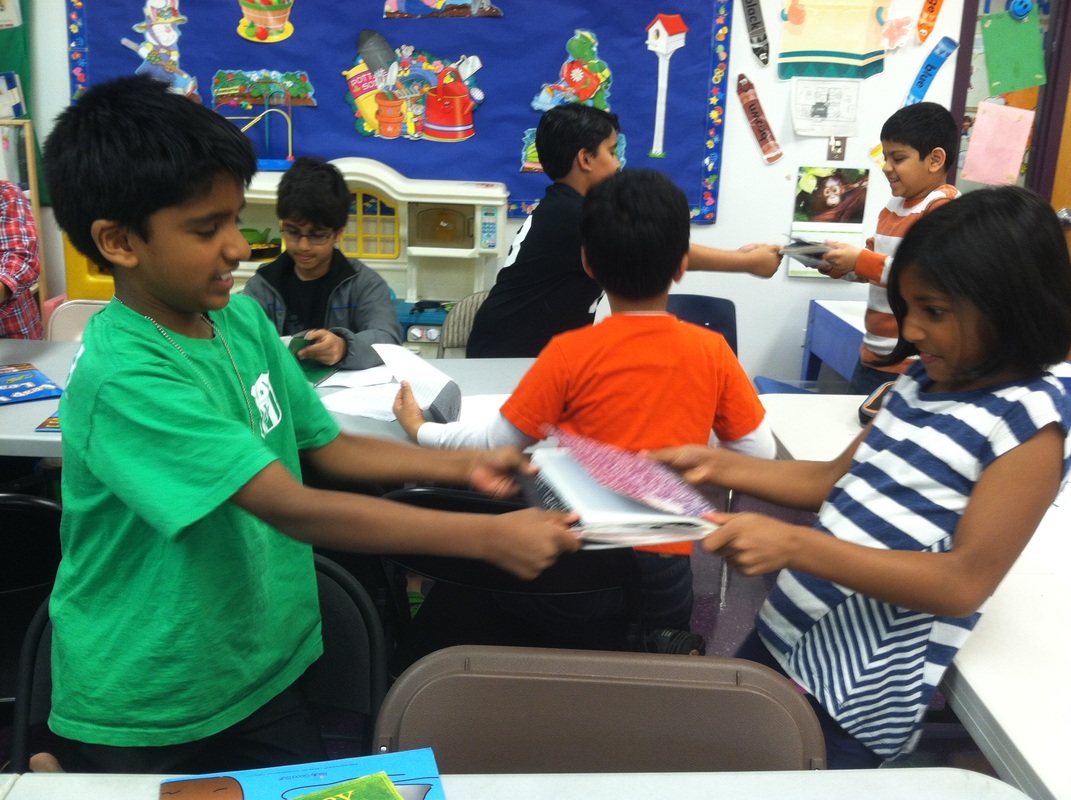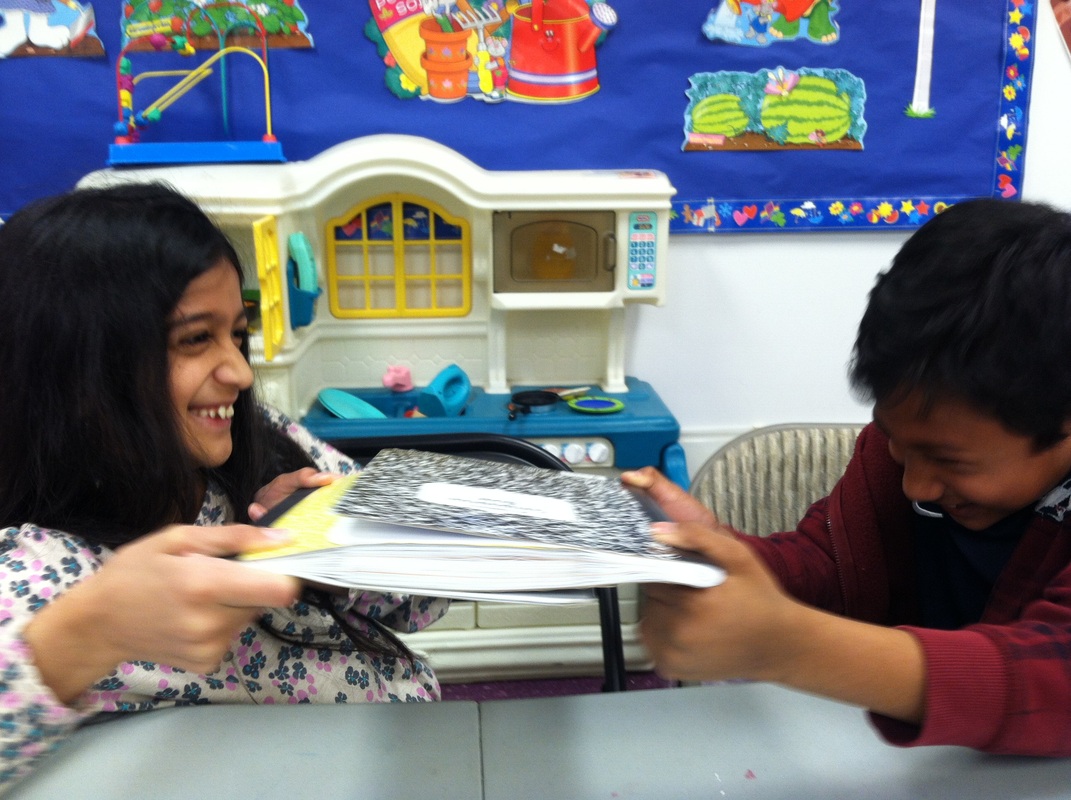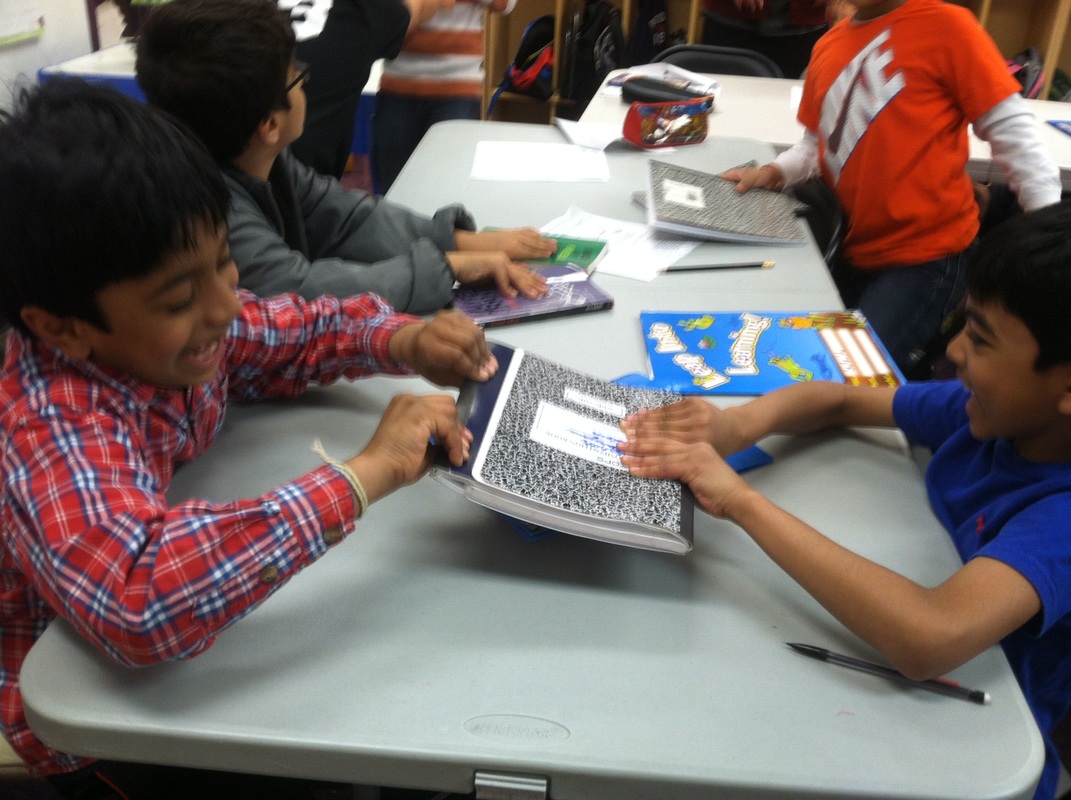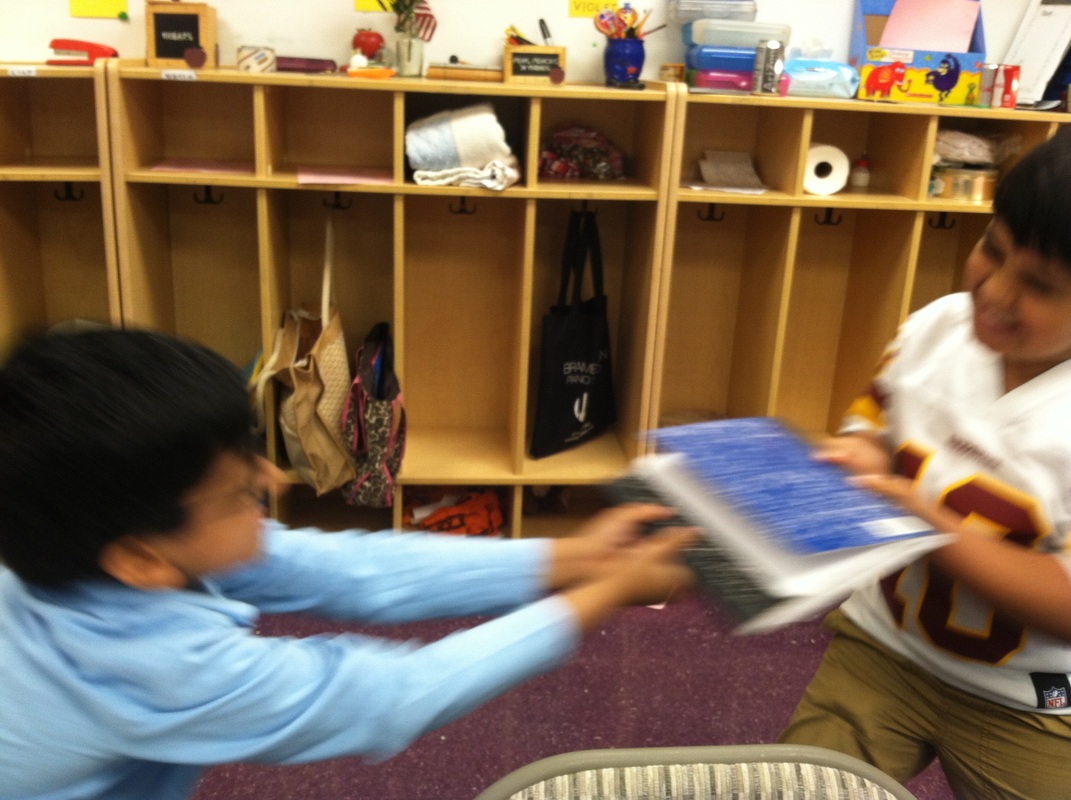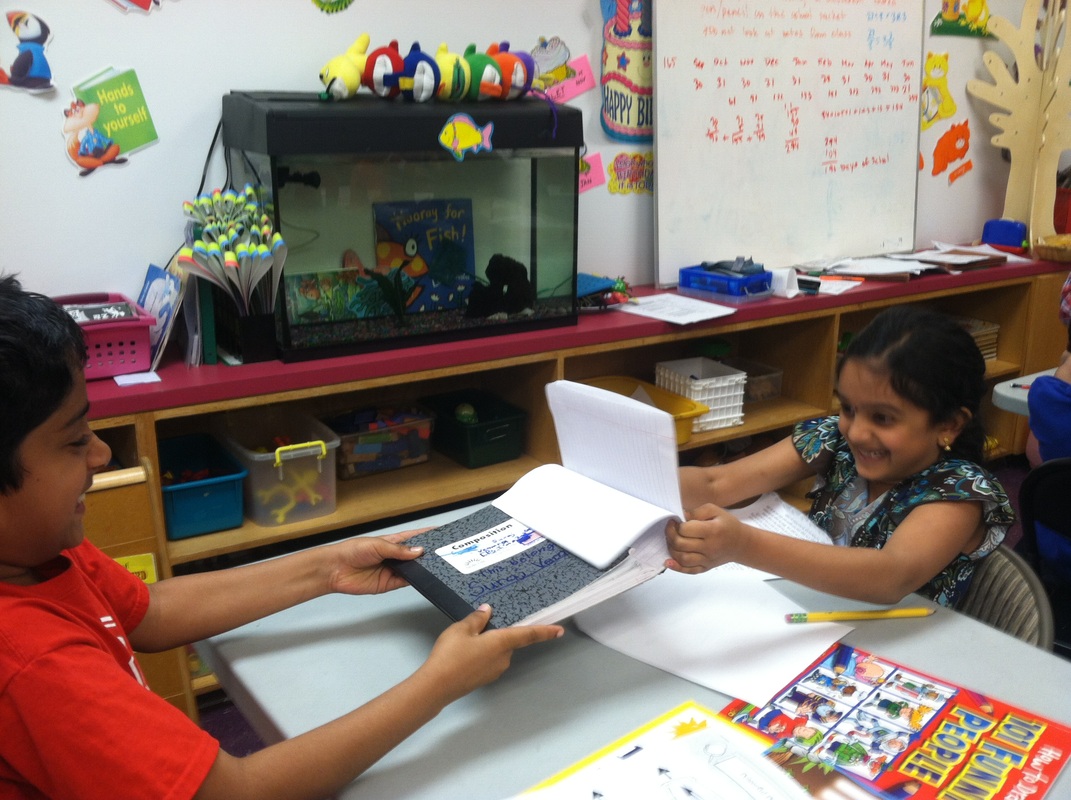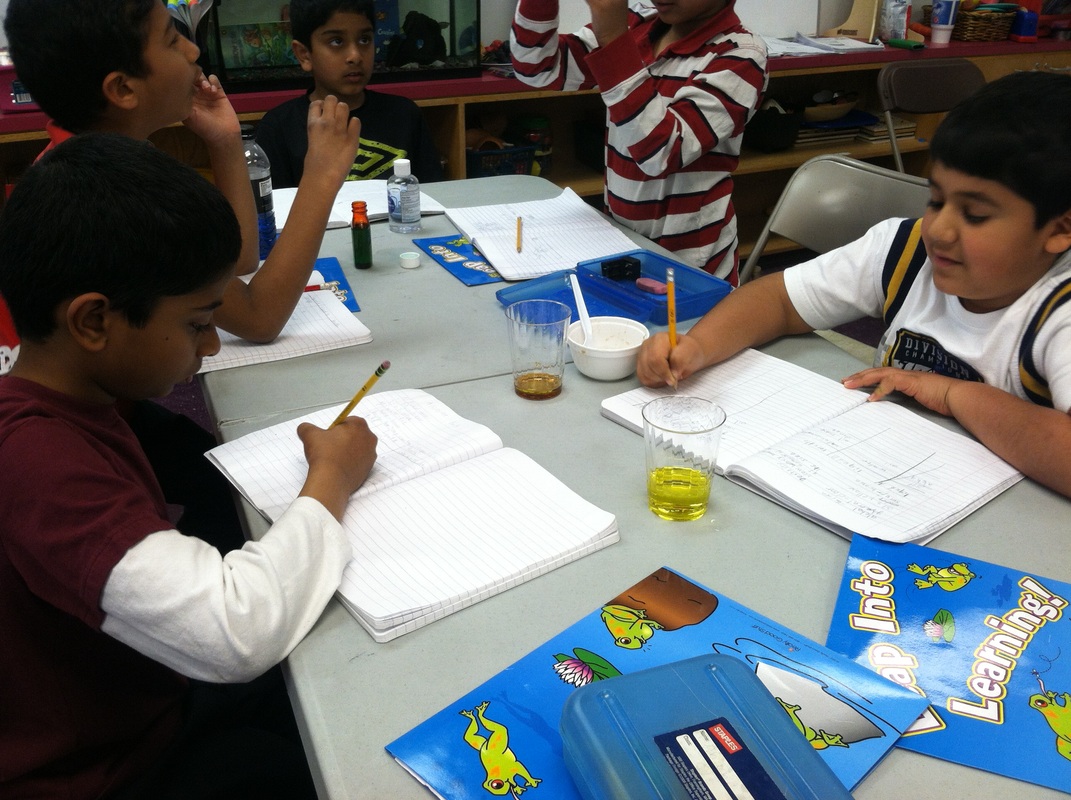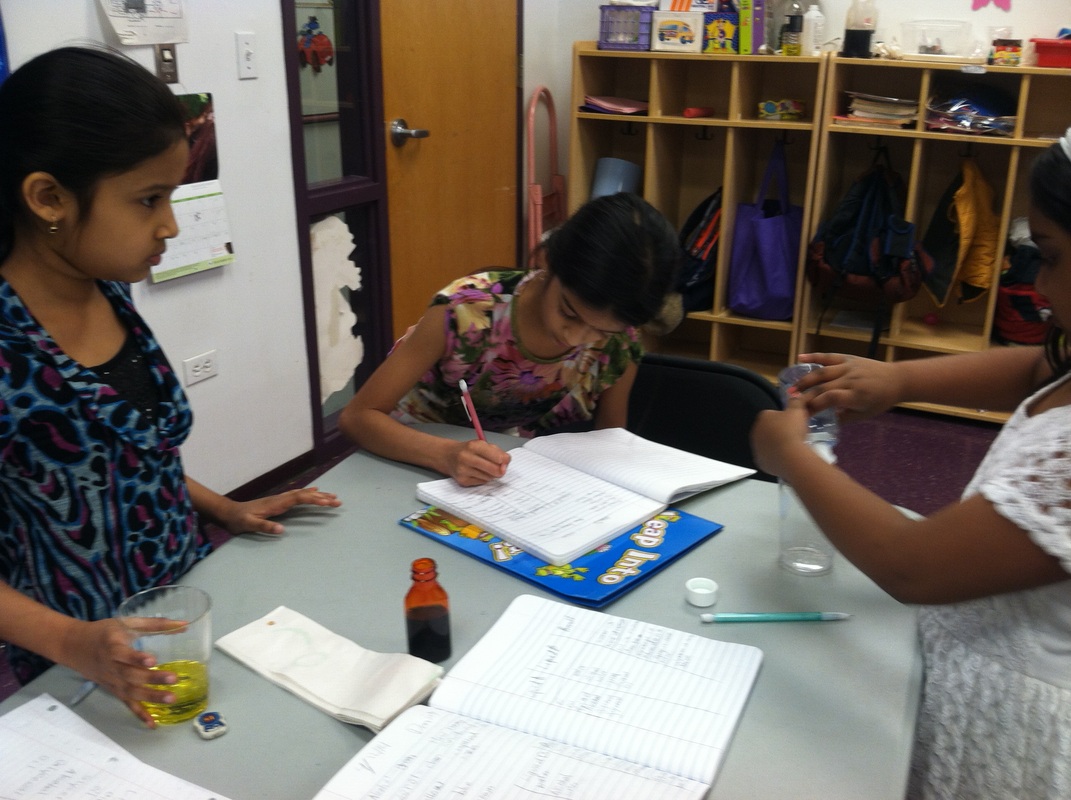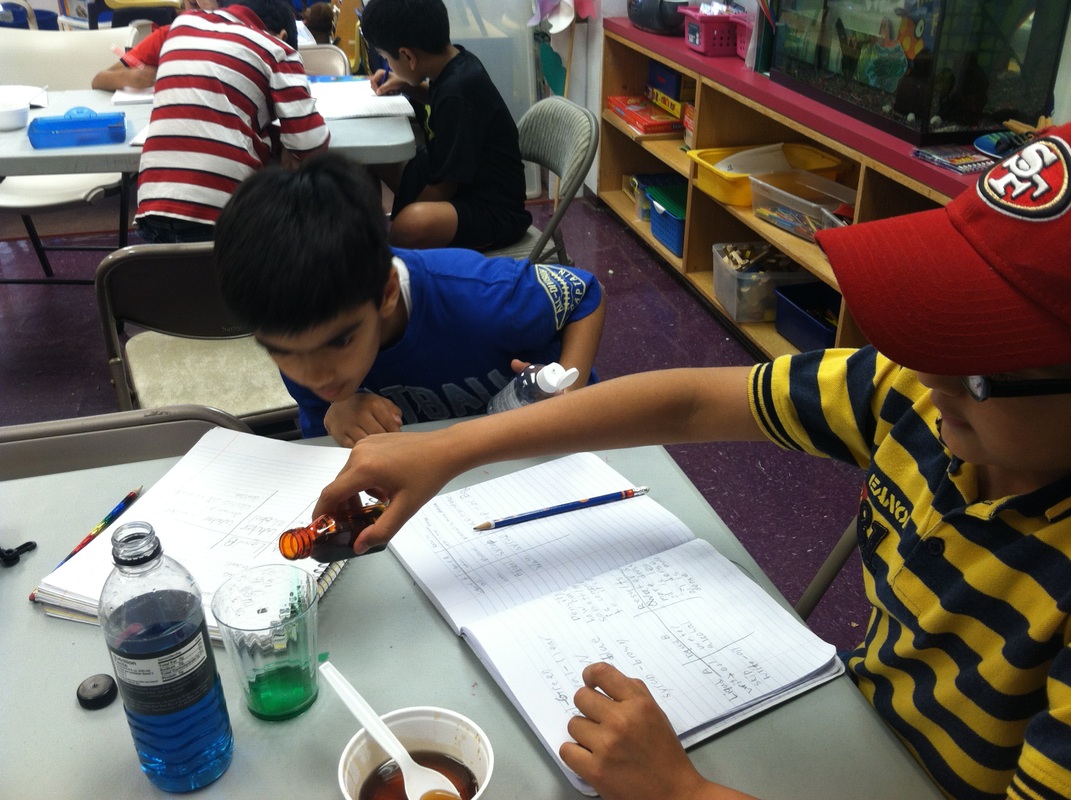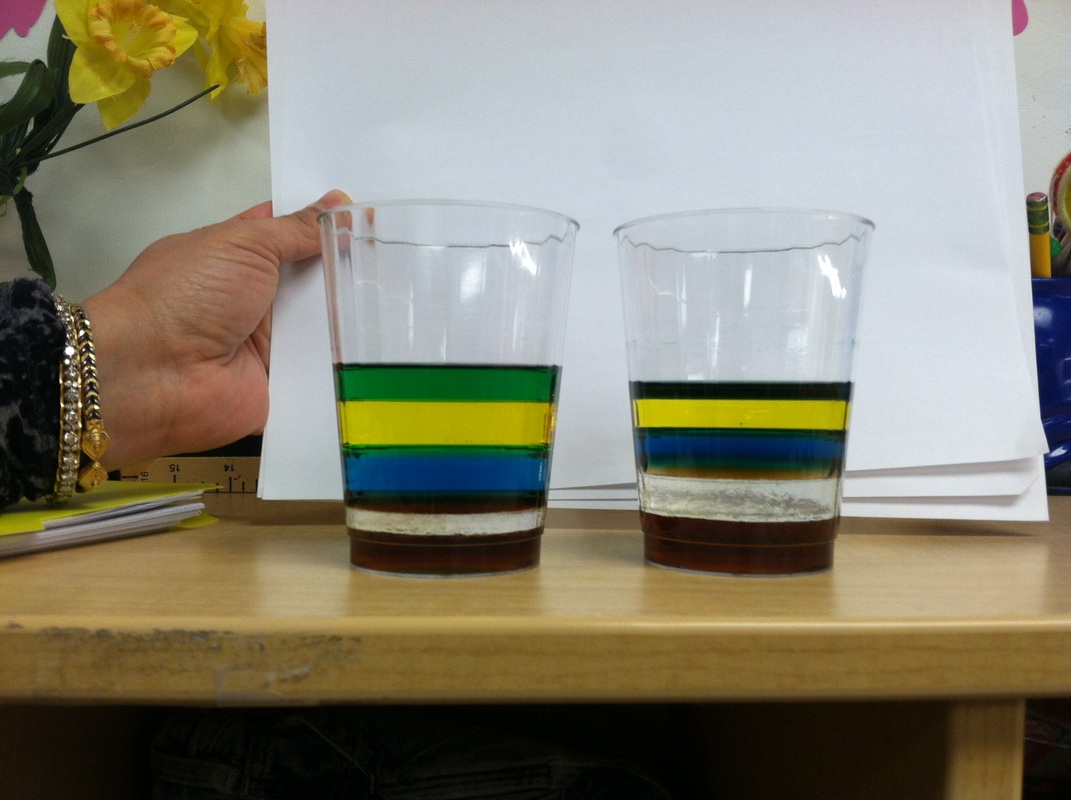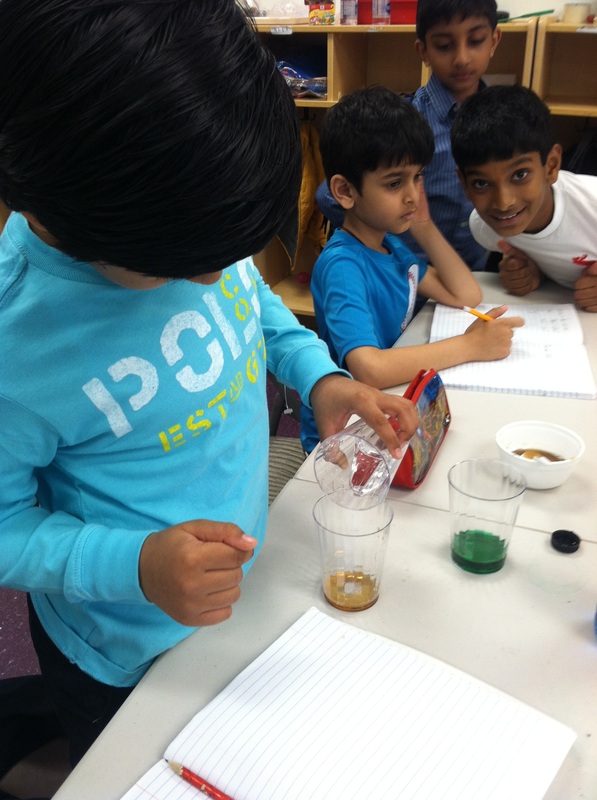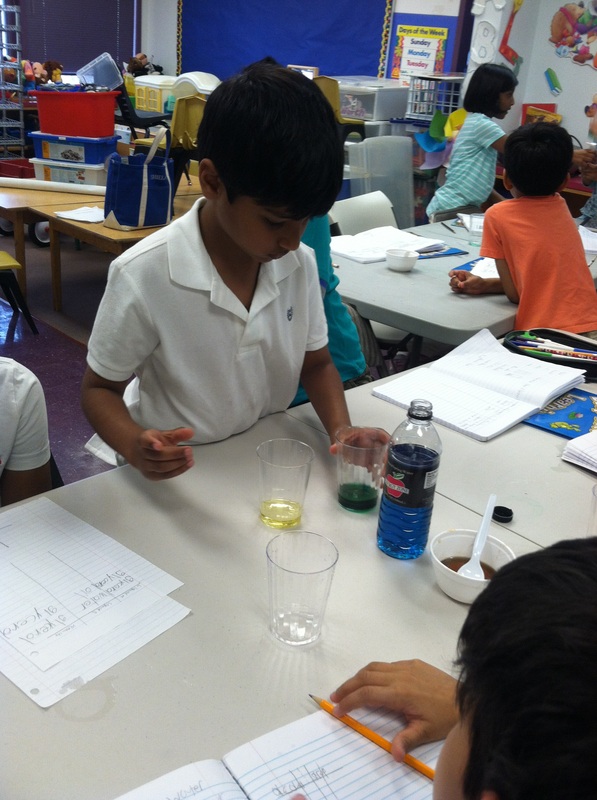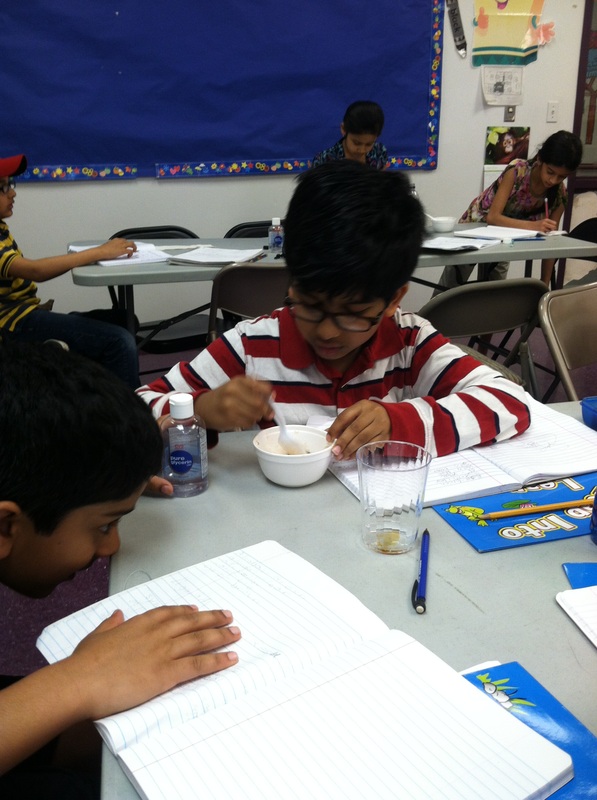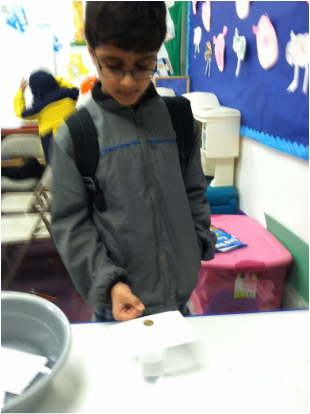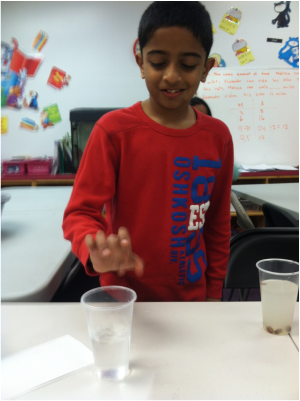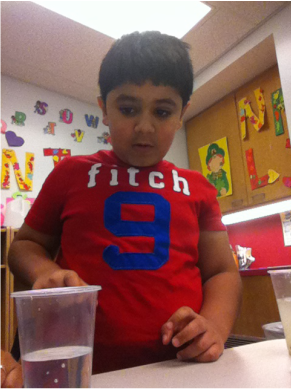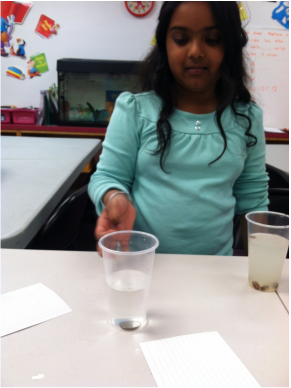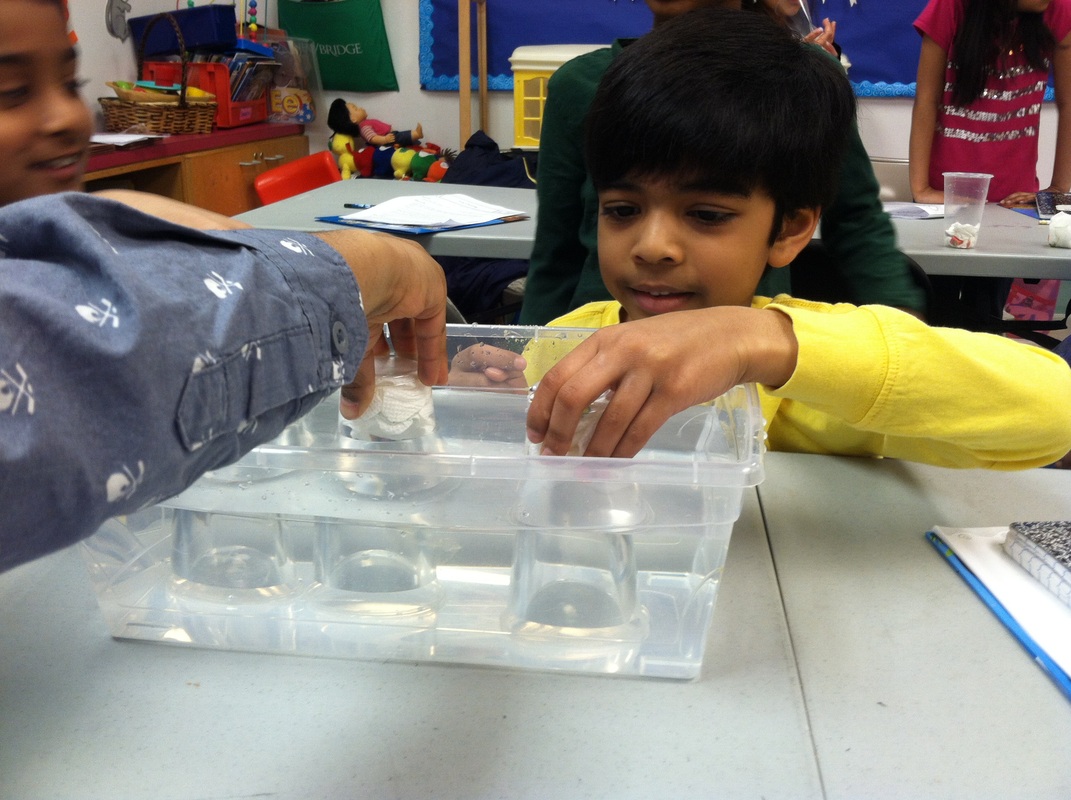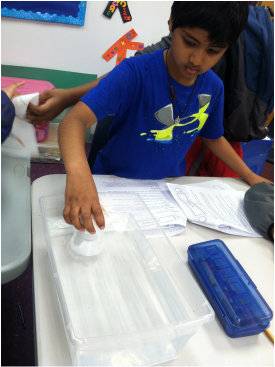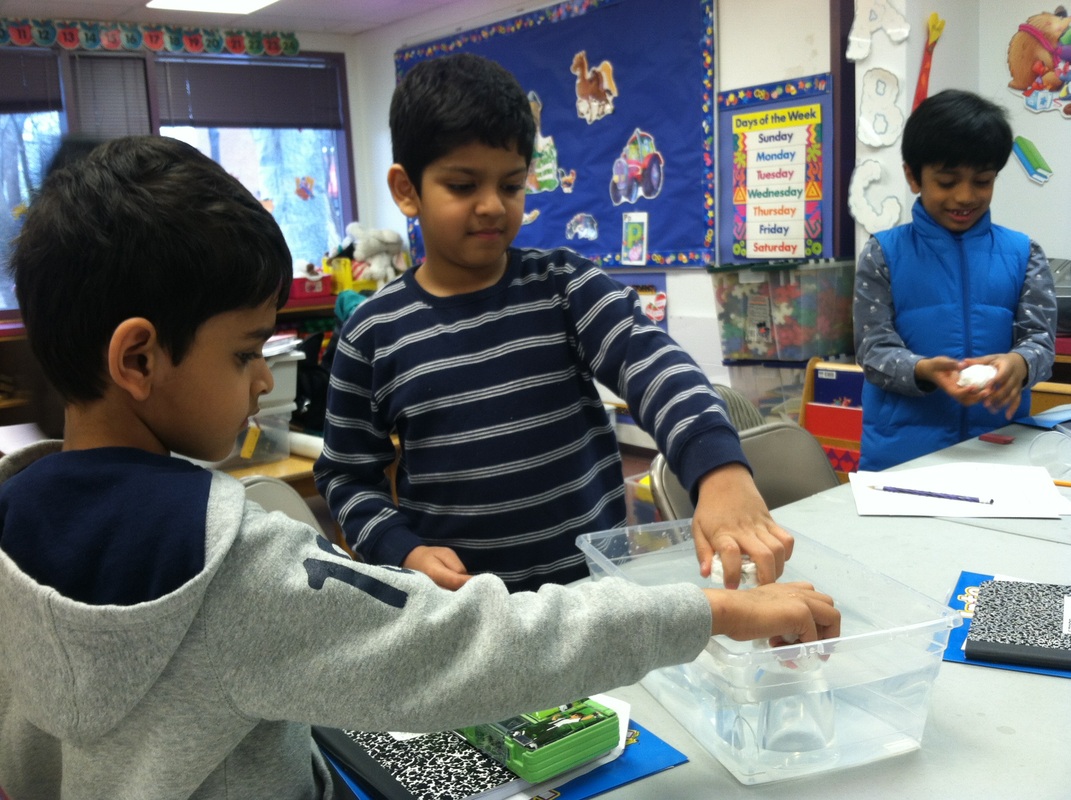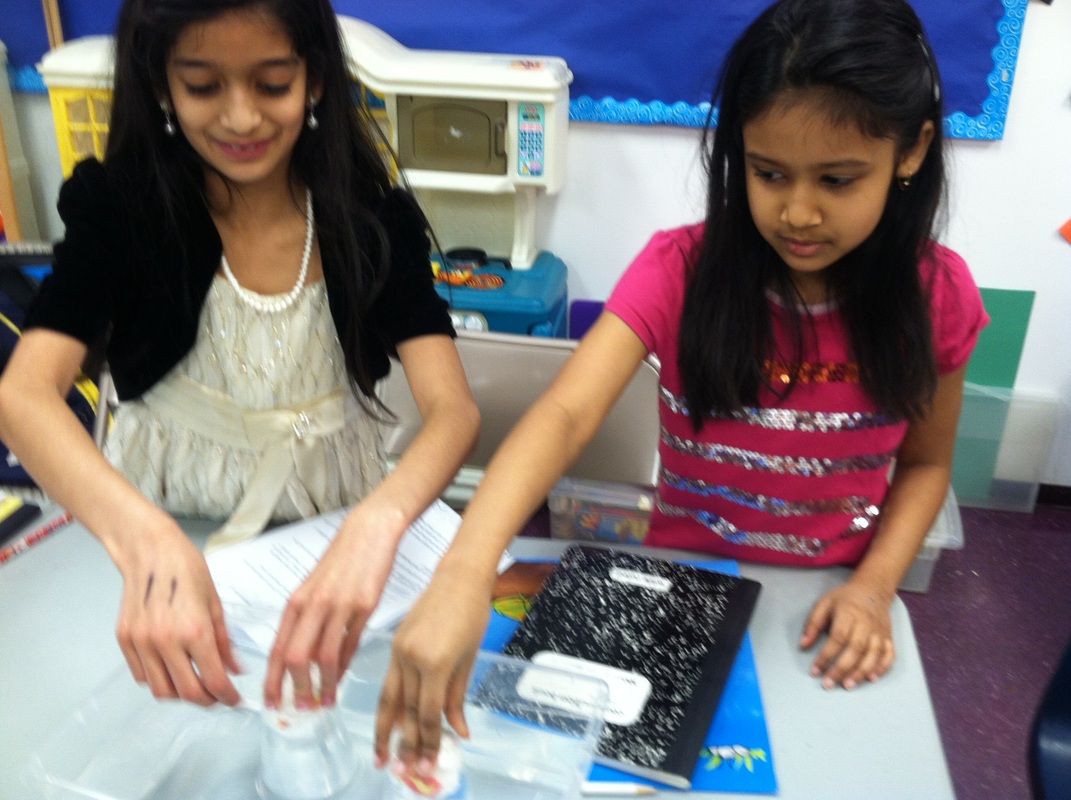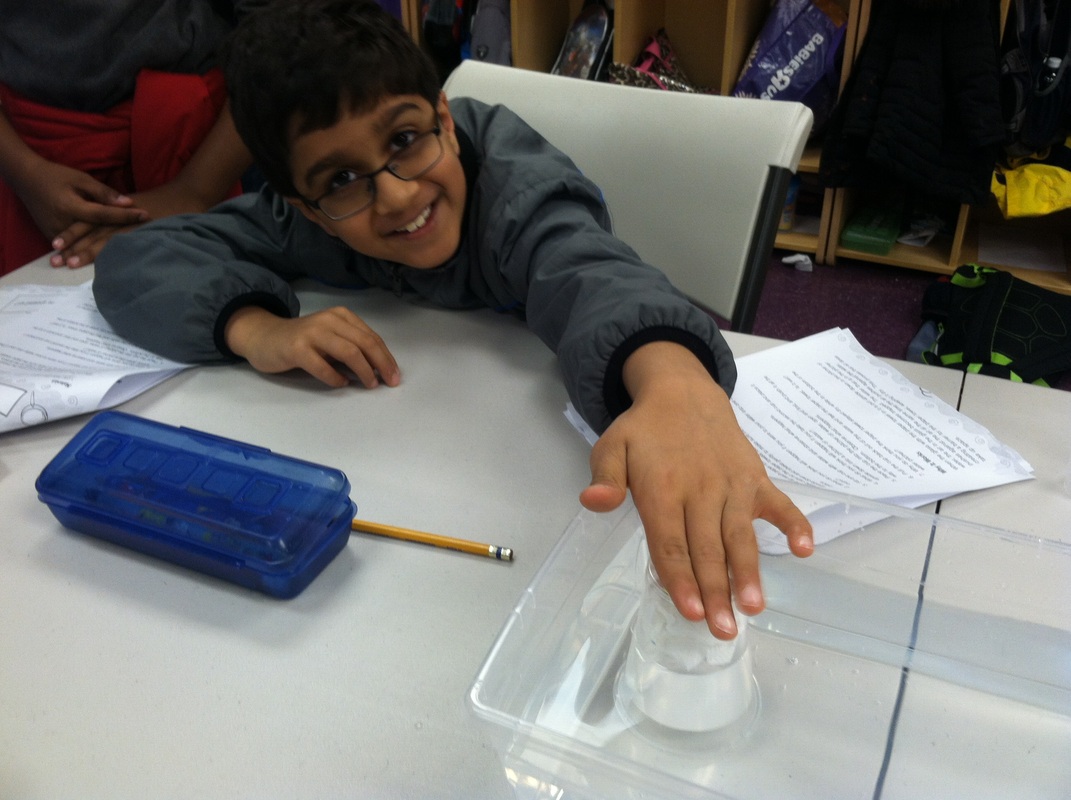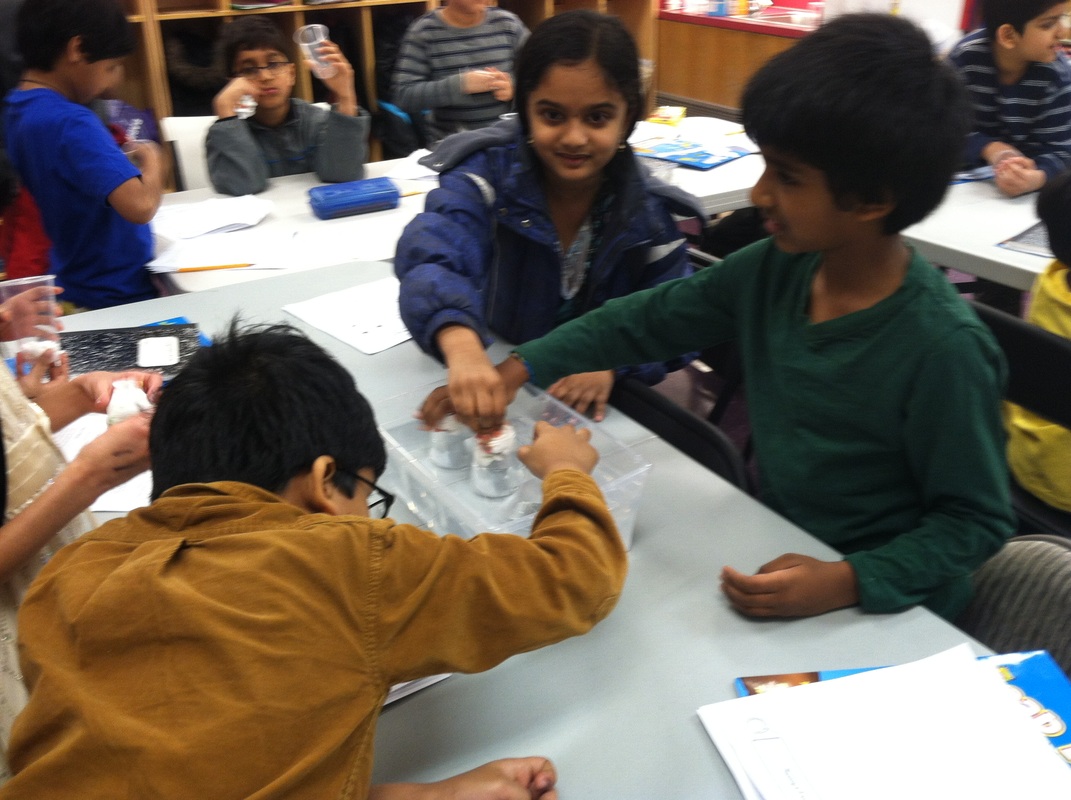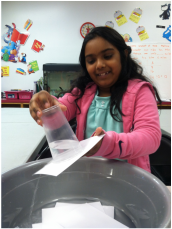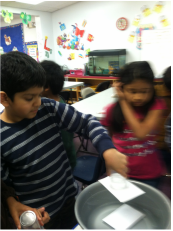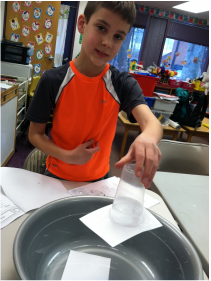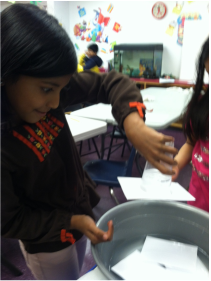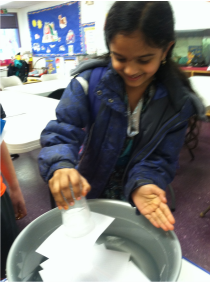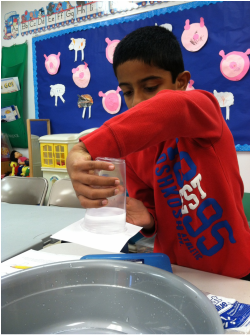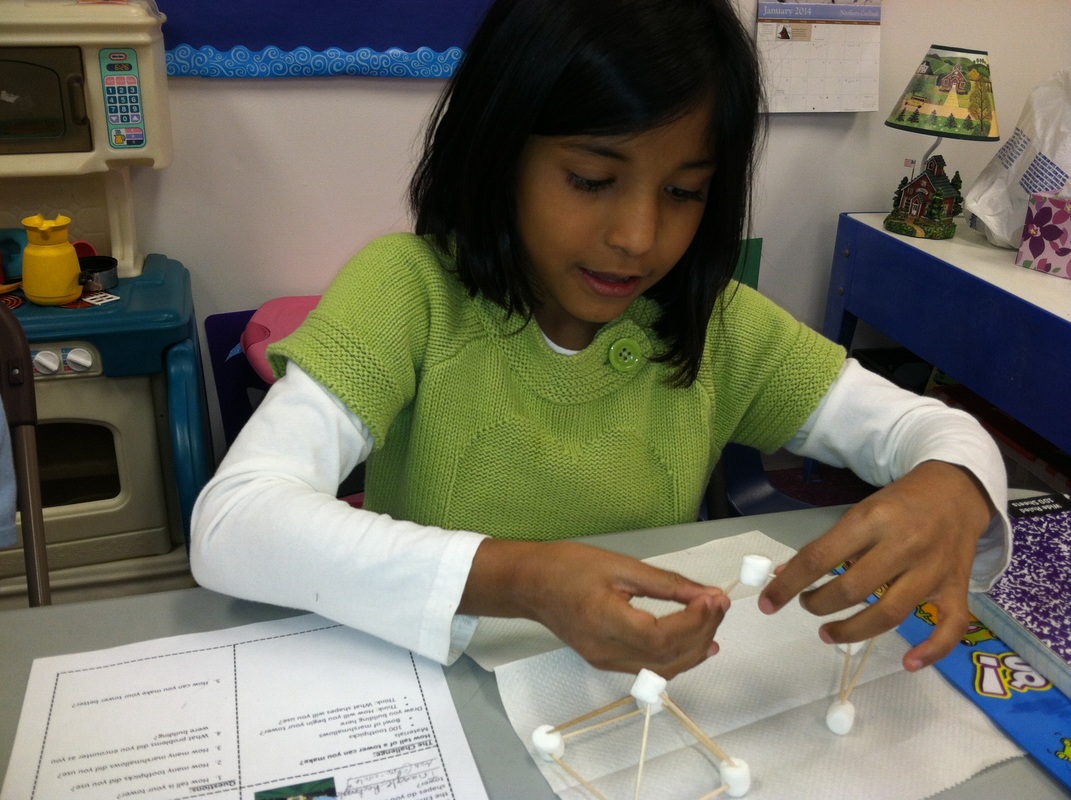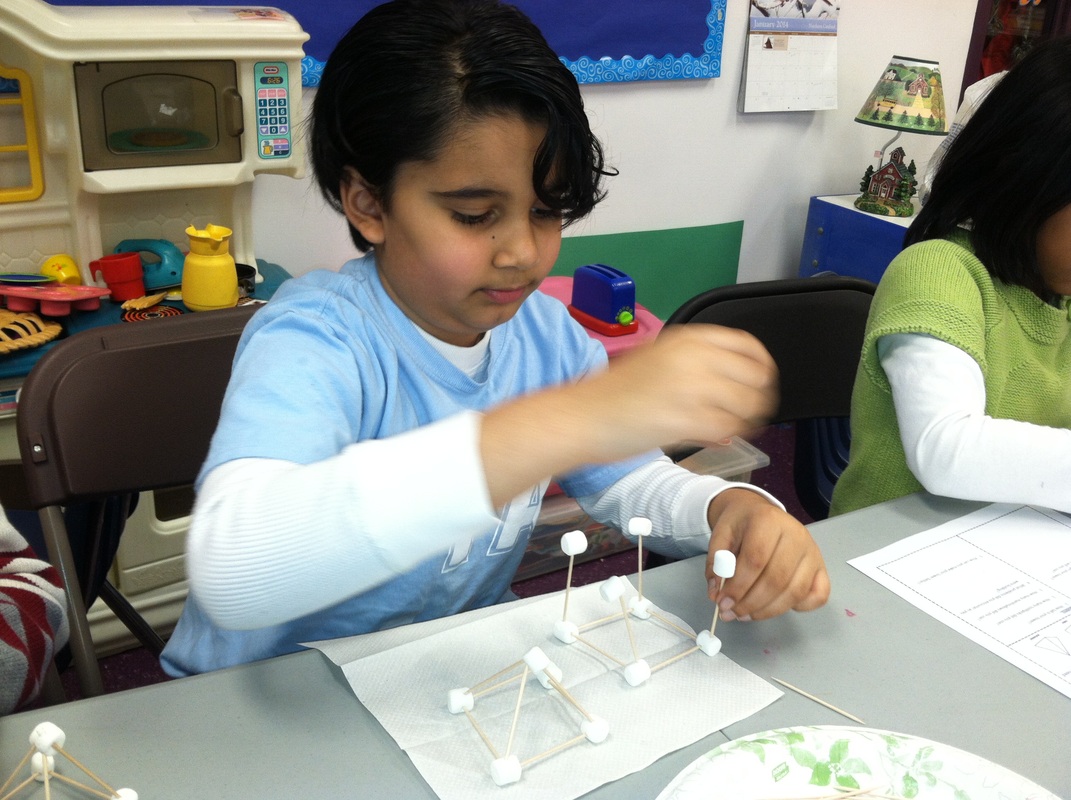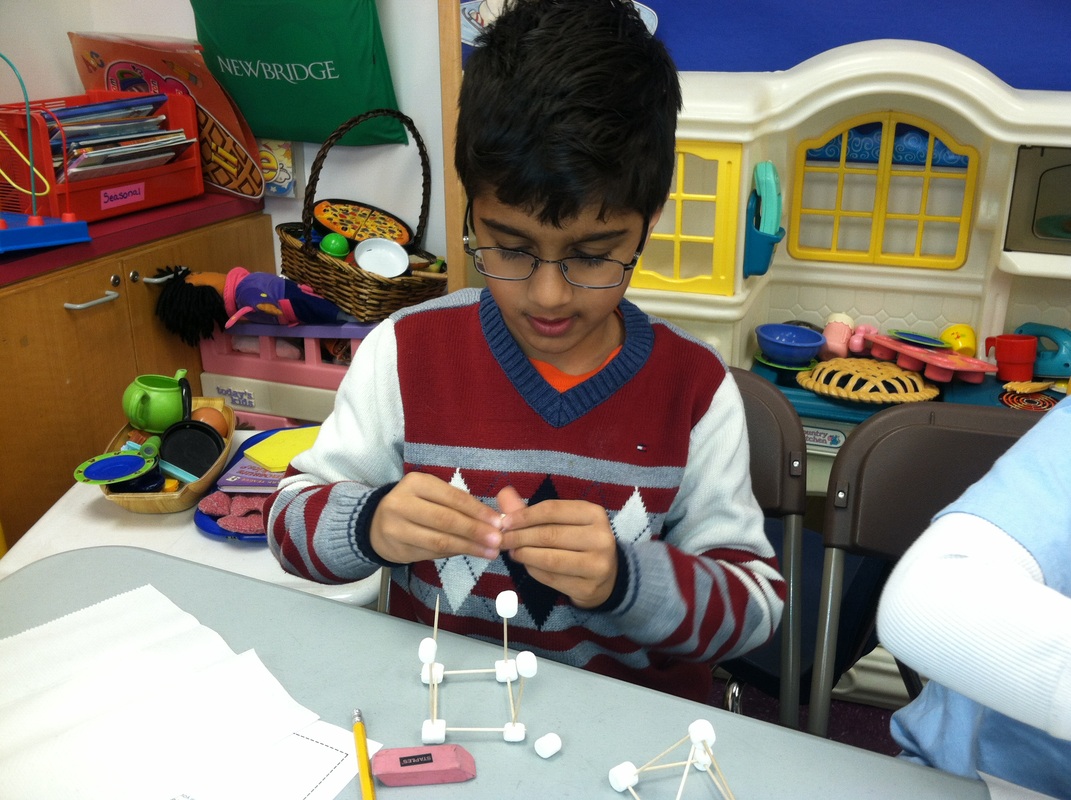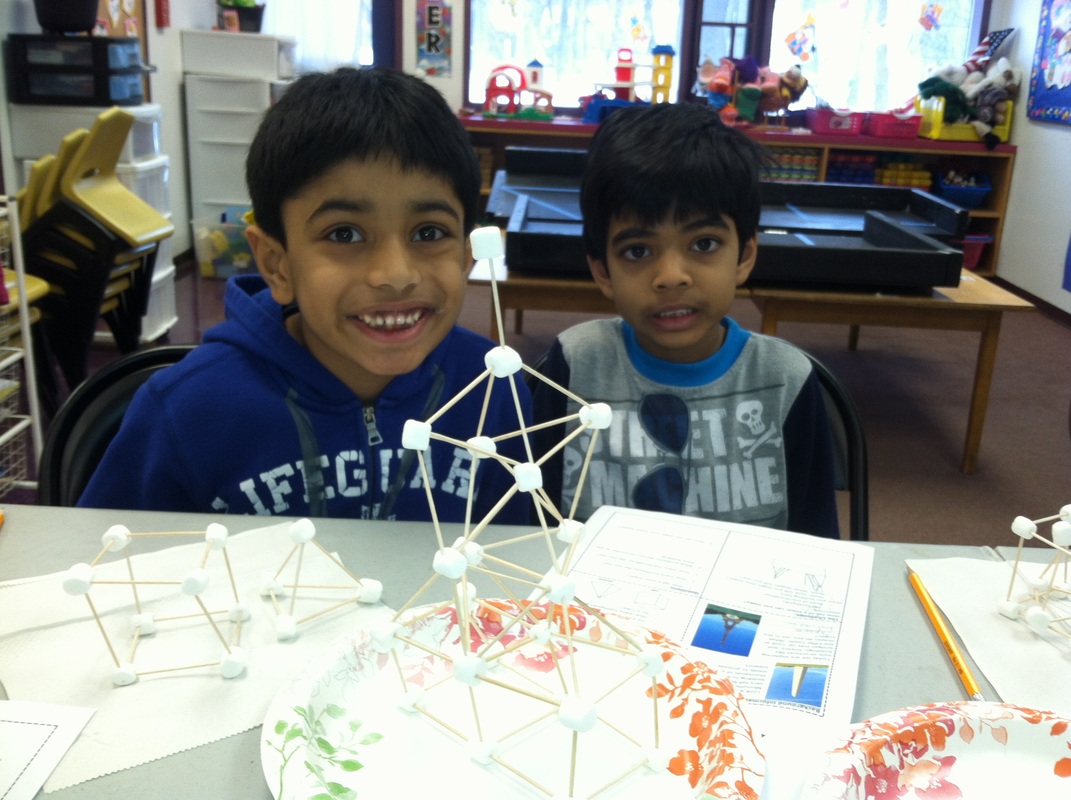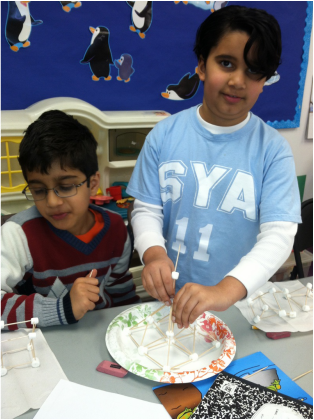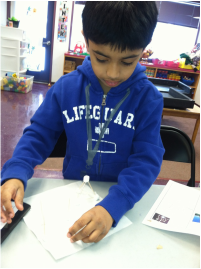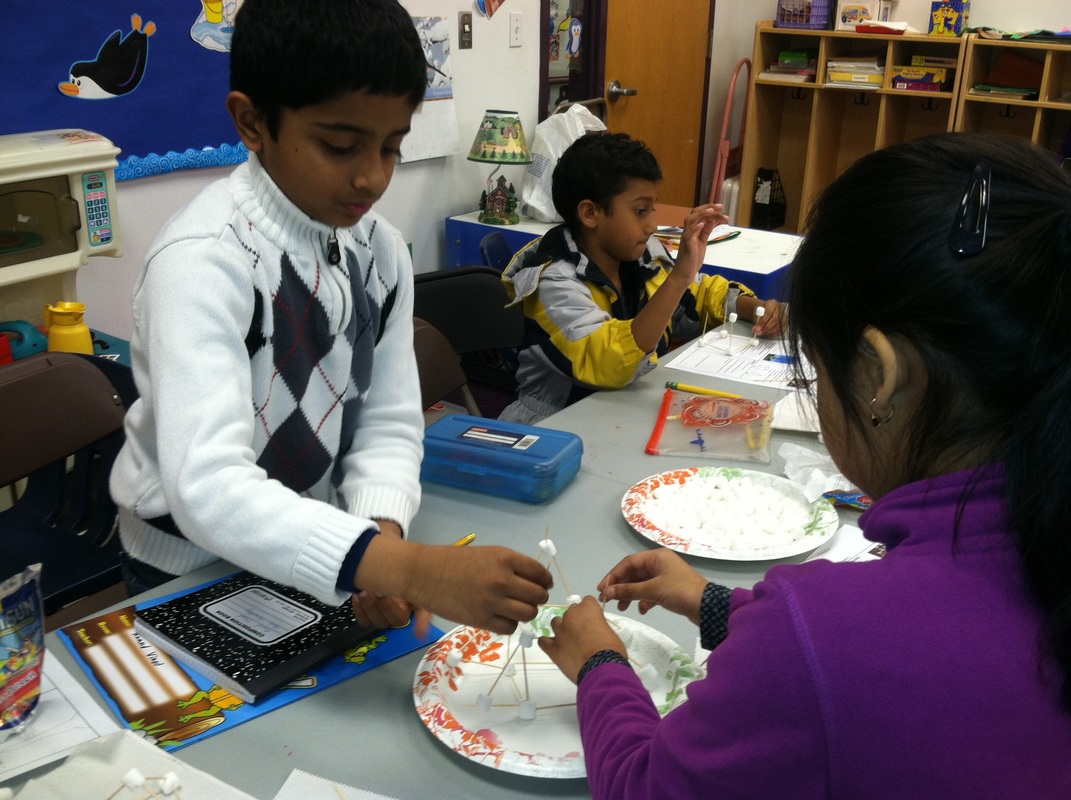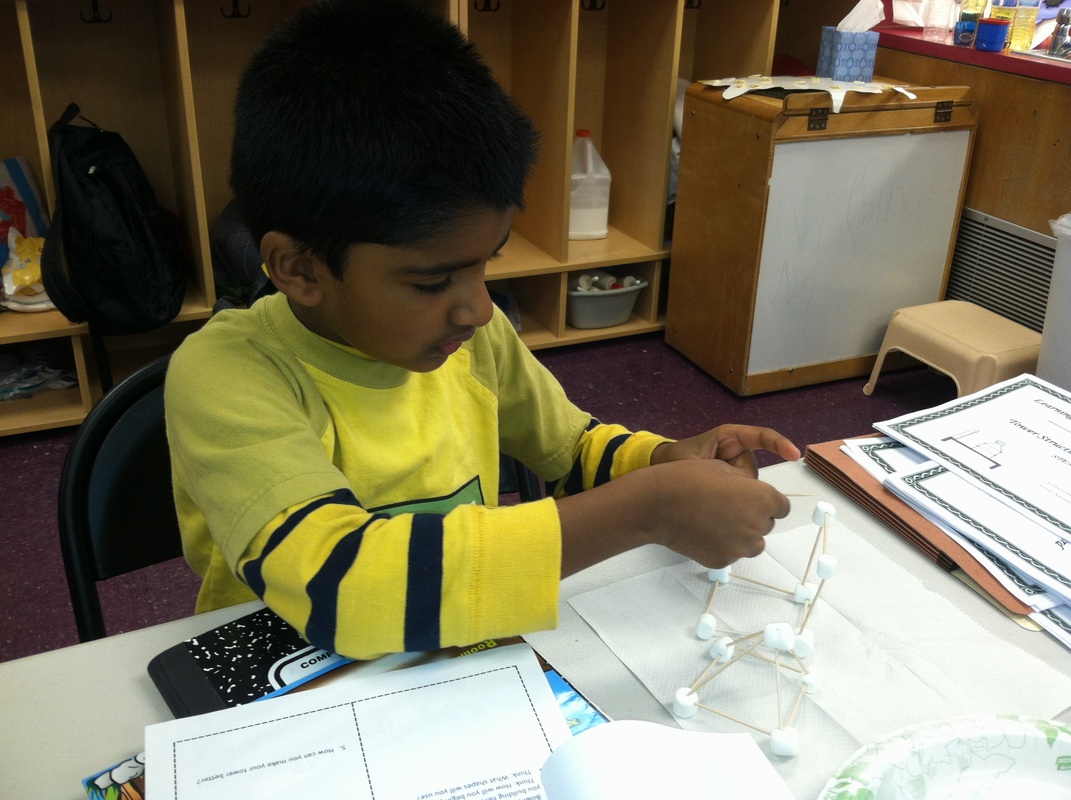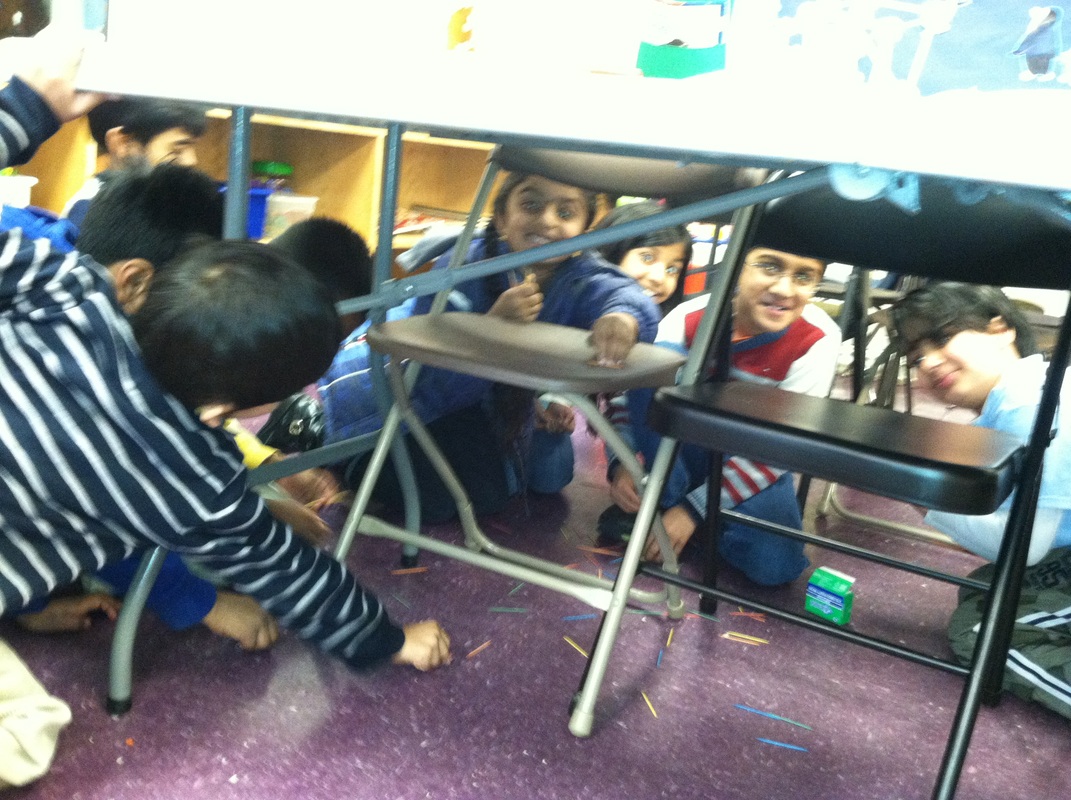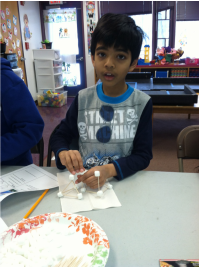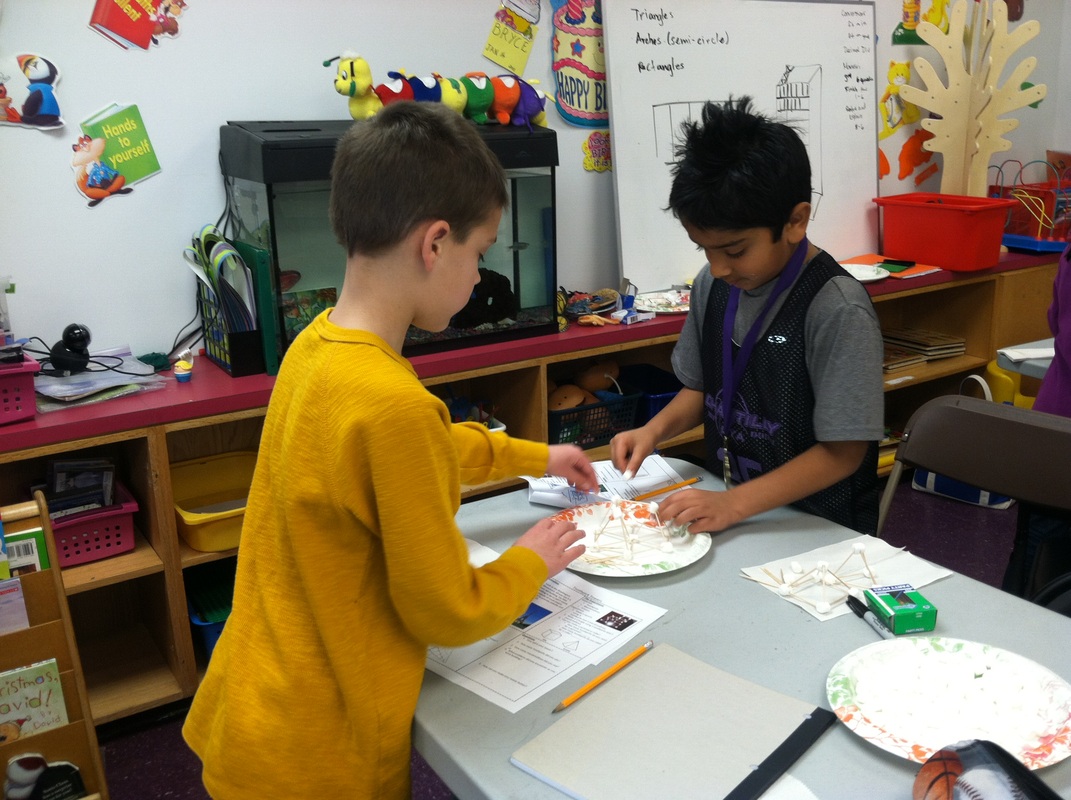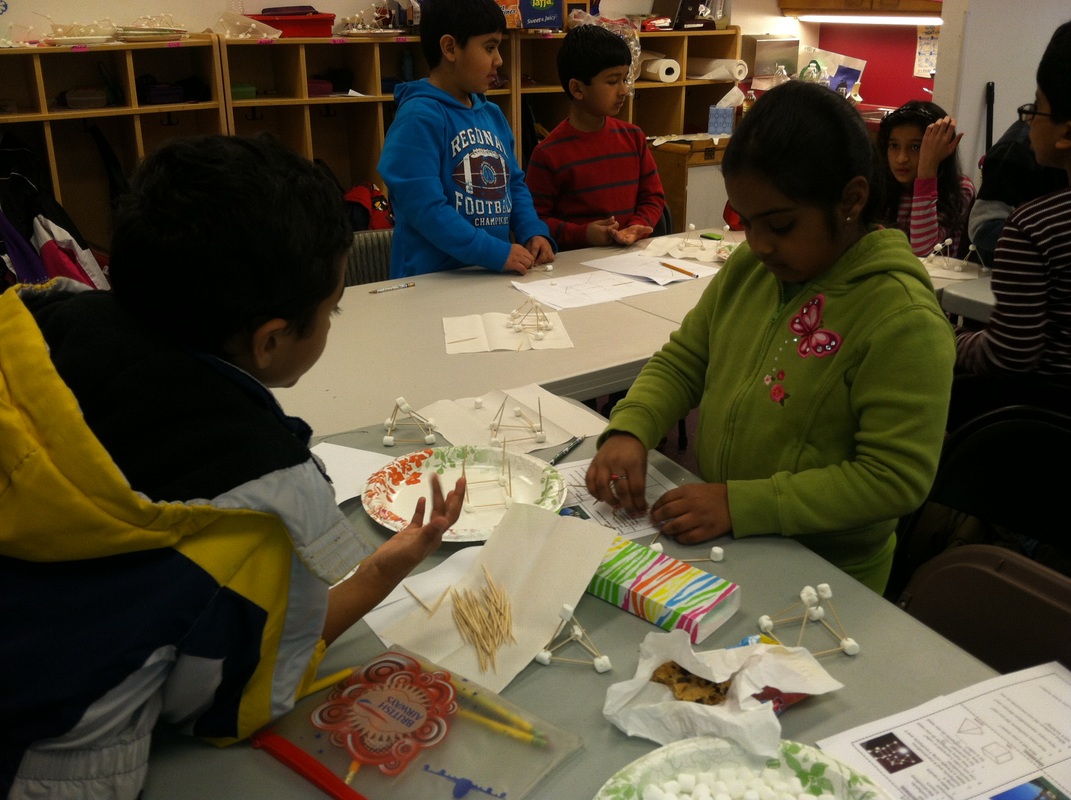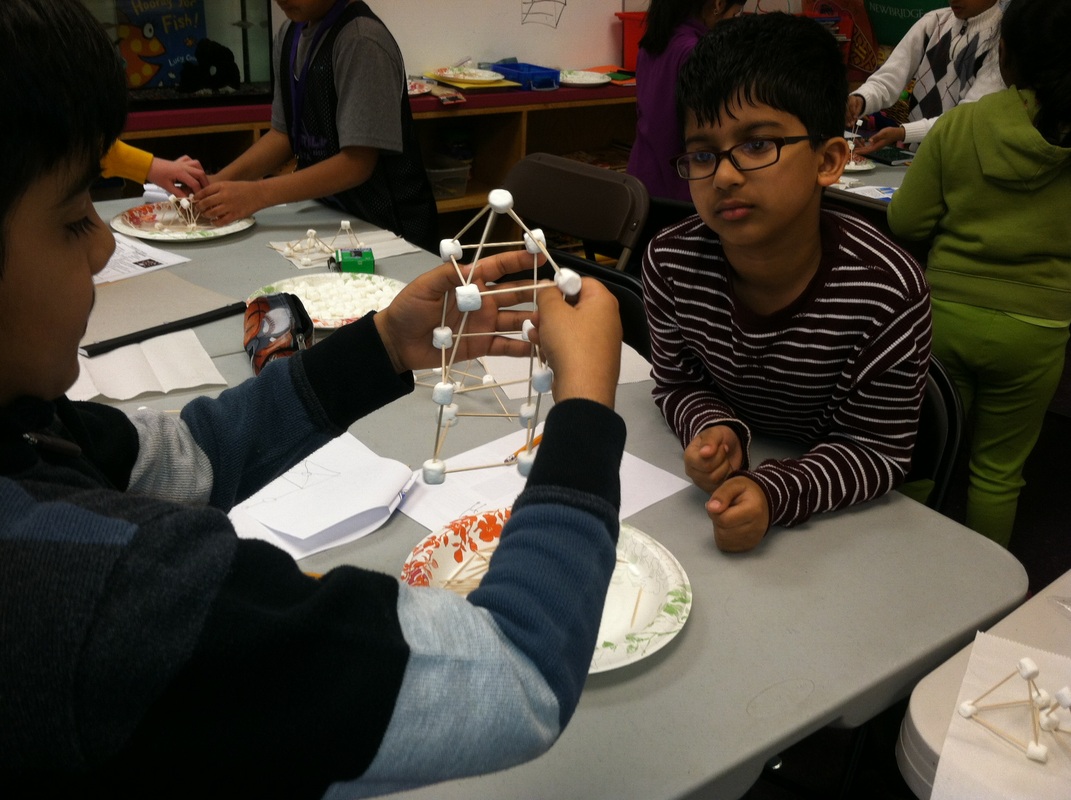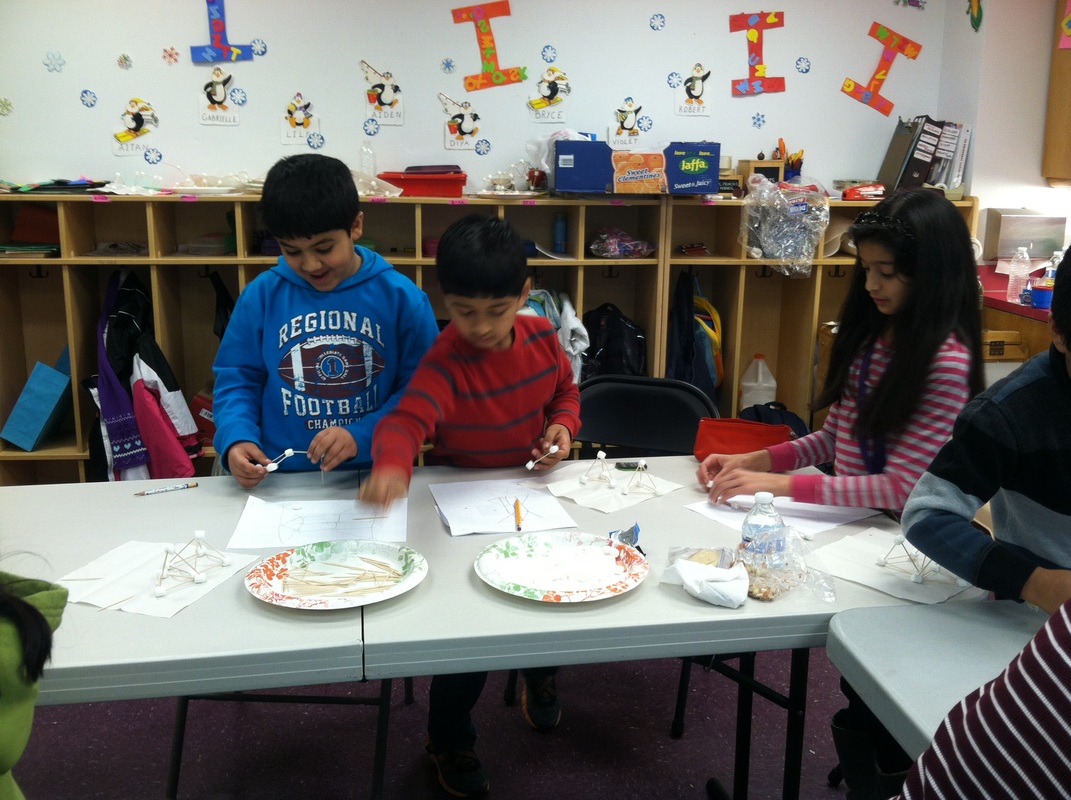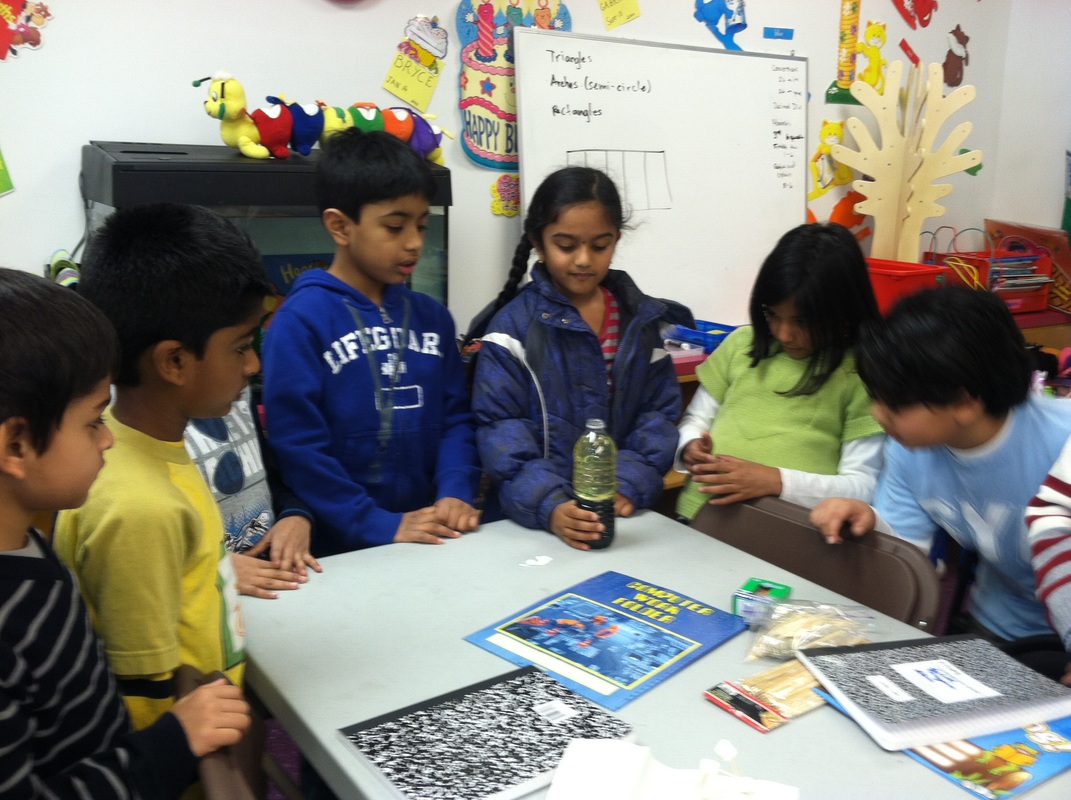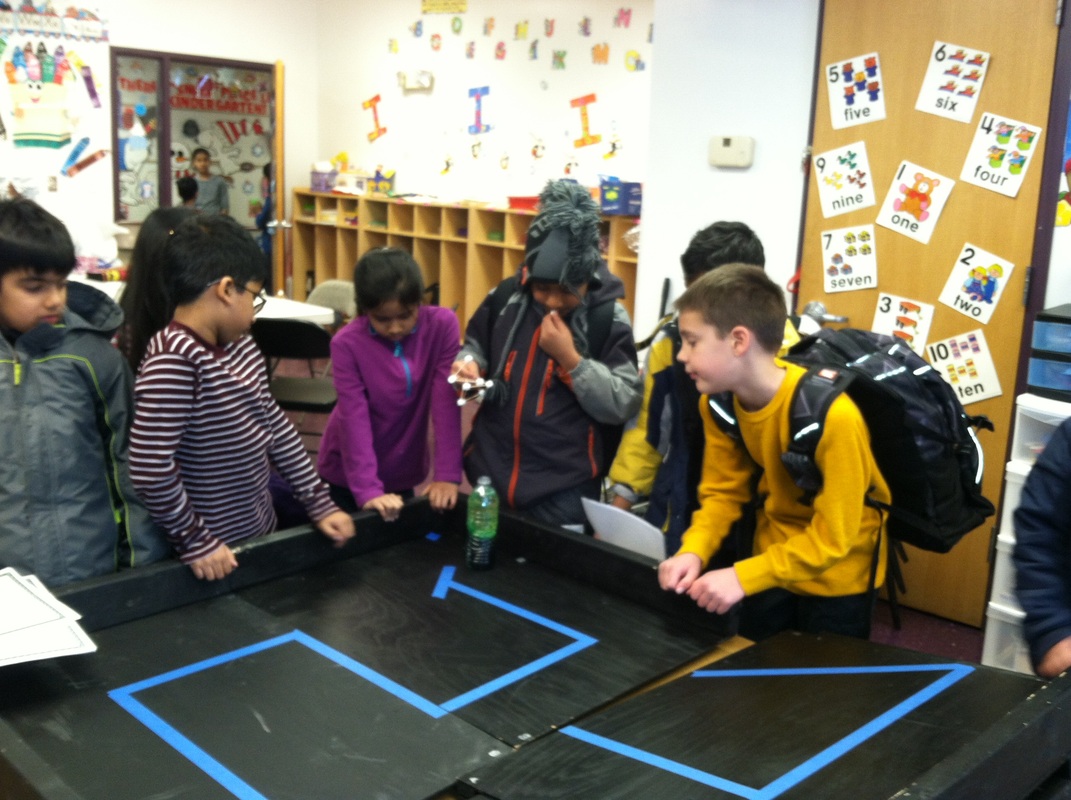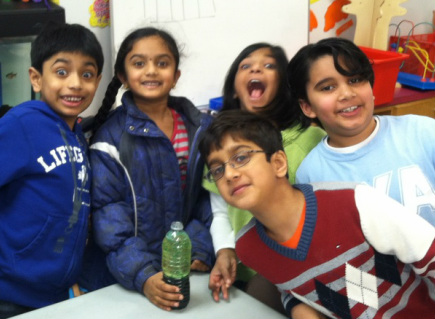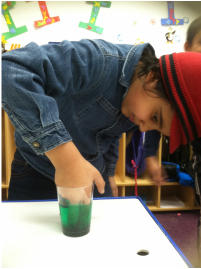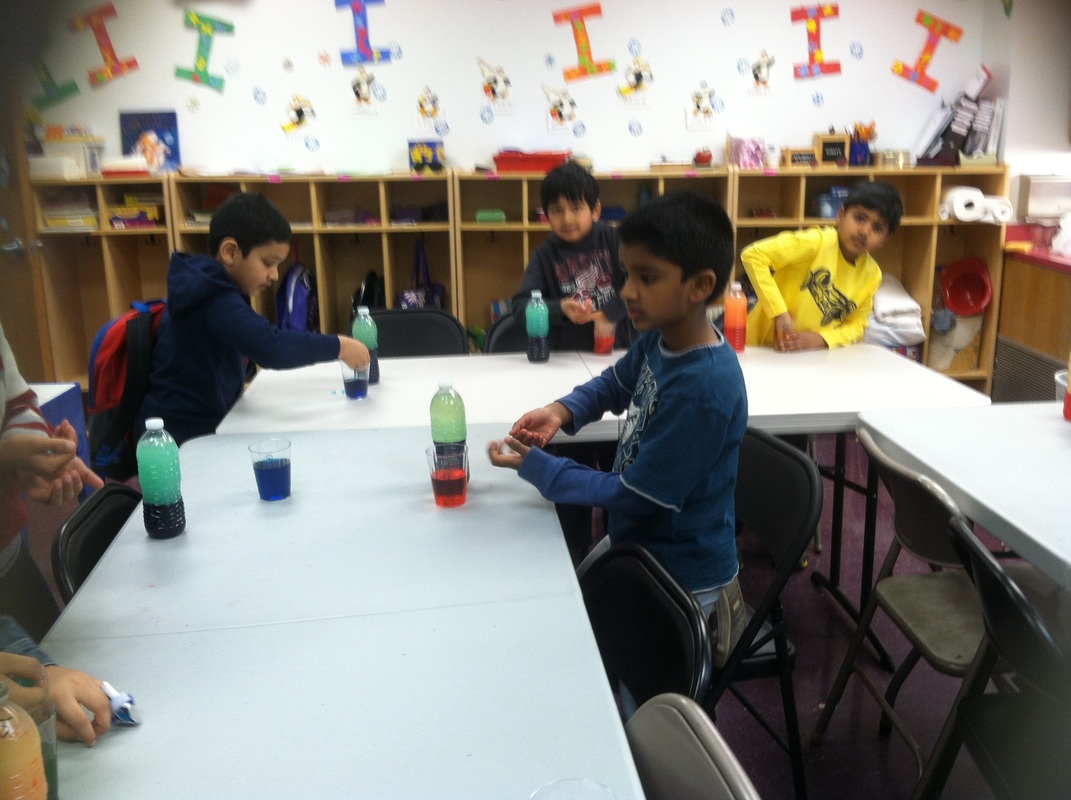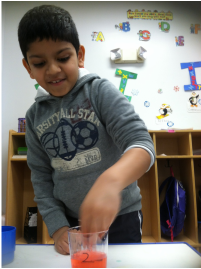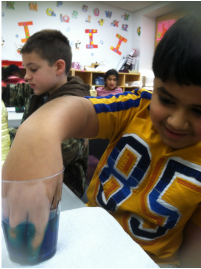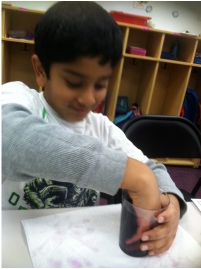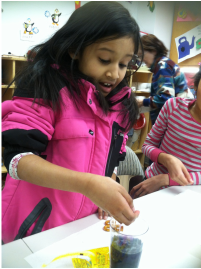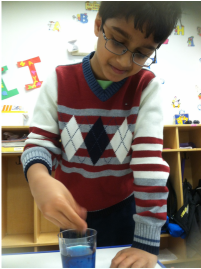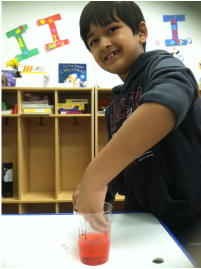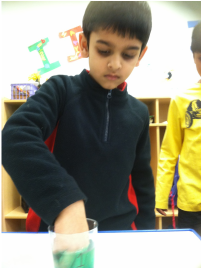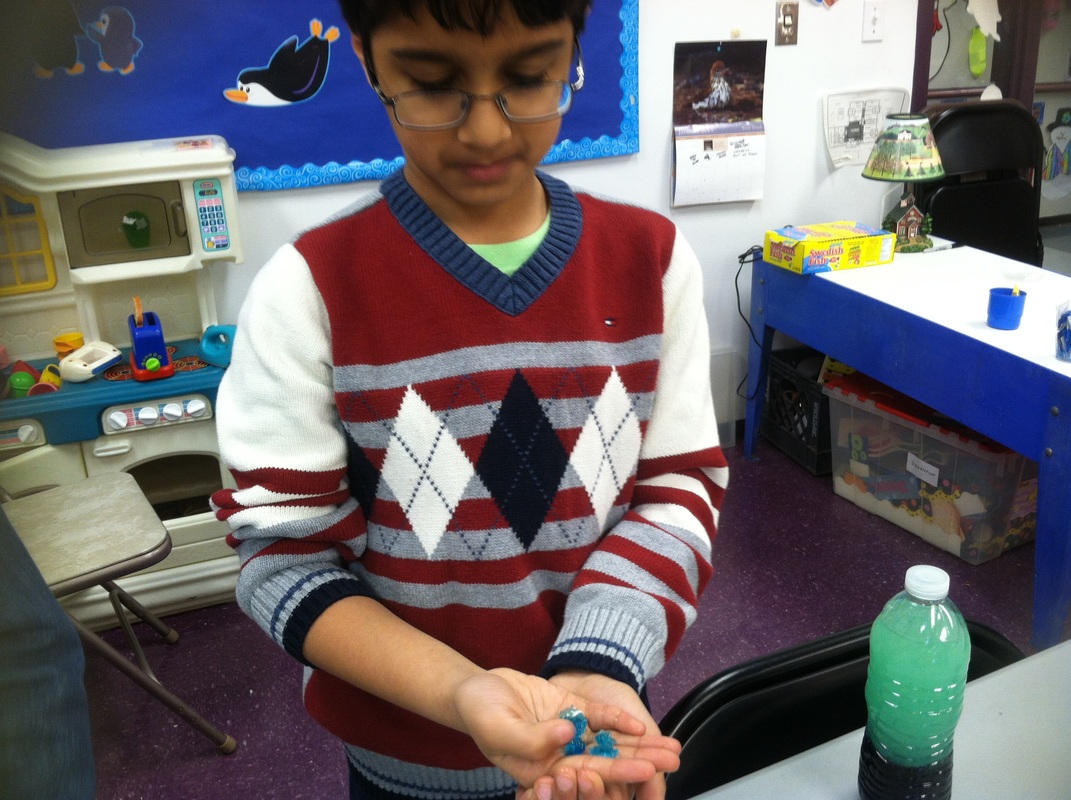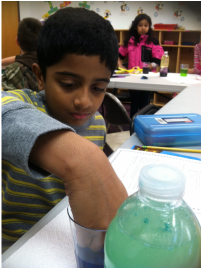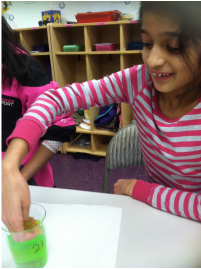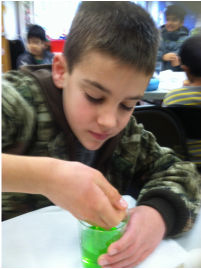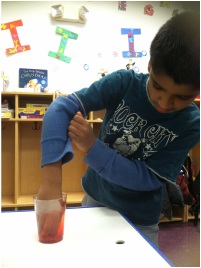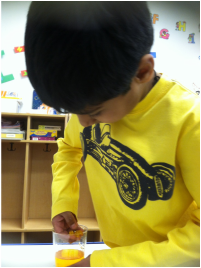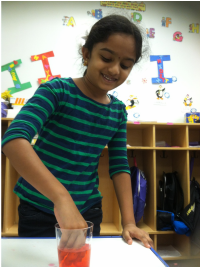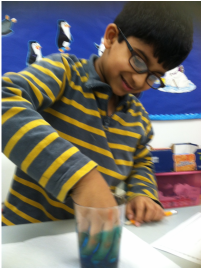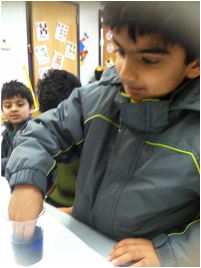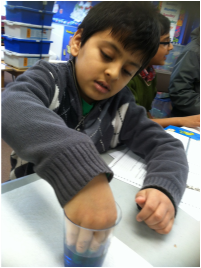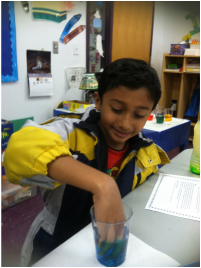Science Fair Practice: Experimental Design
Using hoop gliders as the vehicle for learning, students use the experimental design approach to complete a science fair project. It is important that students learn how to properly conduct an experiment with independent and dependent variables. We discuss why variables are important when in comes to making conclusions about your data. Our students learn a lot through a fun experiment that shows what students can accomplish when given the right tools.
Cloud in a Bottle
Our students explore the water cycle through a hands on activity that brings the clouds down to their level. As the discussion ensues students can readily explain how precipitation, accumulation, and evaporation occur, but no one can figure out the cause of condensation. We experiment to find out how pressure forces water molecules to come together and form tight bundles that we see as clouds.
|
The pressure builds as students take turns to pump enough air into the different bottles. They can feel the pressure inside the bottle but still can not see the cloud inside.
|
Once the pressure is released the students can see and feel the cloud that forms. Students use their sense of sight, smell, and touch to compare the clouds in each type of bottle.
|
Cartesian Divers
|
What does density have to do with buoyancy? Students learn why objects sink or float with this fun experiment. Using very few materials, pairs of students investigate the changing density of the diver in terms of the volume of air and water.
|
Each student must be patient to find the correct balance of air and water to make this experiment work.
|
Paper Bridges
In this activity students learn how engineers make strong bridges out of week material. Using only paper and tape students must combine the best shapes to make the strongest bridge in class.
|
|
Students return to class after making bridges at home. Every students made their bridge a different way.
|
Balloon Chemistry
Students are introduced to the pH scale by experimenting with acids and bases. Balloons provide a great way to see where household liquids fall on the pH scale.
Absorbent Polymers: Instant Snow
As students leave the class they pose with snow in hand. We revisit the topic of polymers and their properties. One being, absorbency. Students watch as the teaspoon of white powder quickly fluffs up with just a few ounces of water.
Milk Magic: A Color Explosion
Students learn the magic properties of dish detergent to answer: Why does soap help clean dishes?
Simple Machines: Lever Catapults
Newton's First Law: The Egg Drop Experiment
|
Students explore the world of physics through an experiment that teaches the concept of engineering design. In pairs, students design how to build a container to protect an egg dropped from various heights. Students must counter the First Law of Motion using household materials.
|
Powerful Paperbacks
Liquid Density
Students learn about the experimental process as they discover that liquids have different densities. Students learn about controls as they carefully document their data. Using only two liquids at a time, students compare different liquids to each other and determine which liquids are more dense, Successful experimentation yields a layered liquid concoction that cements the idea that density matters.
Newton's First Law of Motion
Students discover the first law of motion- an object at rest will stay at rest
Air Pressure vs. Water Pressure
Engineering Structures: Marshmallow Towers
|
Here students learn that all structures need some support. As they up, towers start falling over, so its back to the drawing board. They use triangles to give their structures more stability, not just height.
|
With so many hands trying to build, sometimes the best method is to divide and conquer. Teams separate tasks so that one person starts the base of the tower, another builds the side supports, and the third works from the top down.
|
Chemical Reactions: Lava Lamps
Polymers: Water-Jelly Crystals
|
Students feel and play with their crystals while trying to record the size based on visual observation. Our mine bigger than yours? Will they continue to grow if kept in water overnight?
|
Students learn about observations and recordings as they explore Water-Jelly Crystals. Each student records the growth of the crystals as they absorb water and grow.
|
Students get their hands dirty, with mixed emotions, as they try to fish out the polymers.
|







